Text
The Beautiful and Exhausted || Final Fantasy XVI

Since the release of Final Fantasy VIII, there has never been any way to tell what a Final Fantasy game would be like. The reason I point to FFVIII in particular is because, had Final Fantasy VII been less popular or an outlier, we could count it as a once in a series event. But with the release of FFVIII, we could see the beginning of a pattern. This would be even more obvious if you looked at the Squaresoft Playstation 1 lineup as a whole; and even more clear if you look at the Fifth console generation in its entirety (which included the Playstation 1 and Nintendo 64). This was the beginning of the third dimensional era of gaming. A place to turn games into a more cinematic affair. A time to change the way we interact with the media of gaming. It produced blockbusters in the way of fever dreams. It paved the path for gaming today. But across generations, we had franchises like Final Fantasy; a franchise that would come to embrace this experimentation as part of their DNA. This alchemy of gaming and storytelling has led to some of the most memorable moments in the history of this hobby. But experimentation has a downside. More often than not there are failures. You can’t create gold from lead; a hard truth we have had to learn as both fans and developers. Some of us take to fool’s gold as if it were the same; it shines the same but lacks the value. This might not be the most glowing introduction for a review, but I want you to know that Final Fantasy XVI was the desire to return to the days of old while maintaining modern standards. It’s a messy affair, this alchemy. The melding of generations of gaming. Final Fantasy XVI caused me to feel a mixture of frustration and admiration. It made me believe the developers had a desire to lead into gold, but just weren't sure what the recipe should be. In the end, it was all placed on a single protagonist’s shoulders.

Everything leading up to the release of the Final Fantasy XVI led me to believe I wouldn’t like it. That it wasn’t a game built for the fans of Final Fantasy, but the fans of a completely different medium, like television’s Game of Thrones or the worlds of The Witcher. And while I have no aversion to the latter and no love for the former, I still couldn’t help but feel immediately displaced by the look, feel, and direction of all the media. A purchase to be made in favor of a completely different medium. While gaming as a whole seems to be escaping me into the hands of another generation, I thought I could find solace in the old guards from my youth. Squaresoft had an air of measured science. Creating and innovating in a way that favored an entire generation of fans while pulling in new ones with their modifications of play. They built an empire that has long since rested on its laurels. And like every empire unhappy with complacency, they are trying to conquer new lands in spite of the cries from their constituency. But, let me be clear, that doesn’t make Final Fantasy XVI a bad game. It doesn’t make it an experiment gone wrong. What it means is that it’s different. It’s a new battle plan finding its legs. What it means is that, as a long time fan, I had a very strong reaction that led to very nuanced feelings.
This was the first Final Fantasy I thought I wouldn’t buy the moment it came out since the release of Final Fantasy VIII on 9/9/99. But like many stans, the demo changed my mind almost immediately. It was fast, sleek, and brutal. It delivered that delicious vertical slice of everything the game had to offer. It knocked me out of my chair by the end of the demo. A mainline Final Fantasy putting a real blade to the neck of our heroes and drawing real blood? The performances were the perfect mix of melodramatic and serious. Theatrical and operatic. Essentially, I was praising Final Fantasy for actually trying to do outloud what it had always done behind the veneer of a PG-13 rating. Like a fish after a lure, I was hooked. The day I finished the demo, I *dun dun dun* PRE-ORDERED THE GAME! I gave into the beast. Though, to be fair, I already mentioned that I have been doing that for years in the case of this series. Anyway, the demo did its job unlike any ever had. And if this one page introduction wasn’t proof of that I have a lot to say, then the next several pages will. Buckle in. We have the story, the gameplay, the presentation, and the impact to discuss.
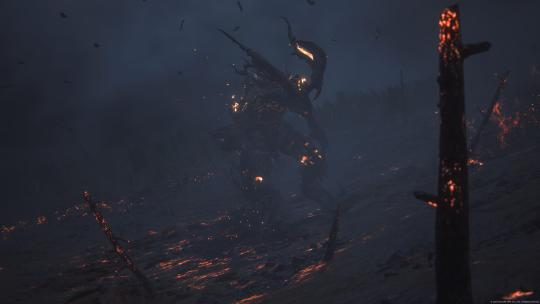
The biggest selling point of the demo was the bombastic end. Essentially, what struck me most in the vertical slice was the story. Not necessarily any one part of the story either, but the veritable roux of all of its elements. The characters by themselves are not very compelling, neither is the world of Valestha or the countries that carved up its landscape. The Mother Crystals, the magic, the slaves, the townspeople, all of them are spices awash in a story that at first taste goes beyond quenching your thirst or satiating your hunger. It makes you believe that something profound is going to happen, that you are just at the beginning of a story with depth. The story starts as a portrait of one young man, Clive Rosfeild, first son of the duchy's ruler, and head guard to his younger brother Joshua who was born with the generational gift of a god that appears in the family line. The immediate implication of this familial line is that we are going to get a series of history lessons throughout our game that will enrich the decisions around our characters, but ultimately, the story remains focused on a single character, Clive Rosfield. And from the first moments that we get to control Clive as an adult, we spend several hours focused solely on his need for revenge. The world takes a backseat to Clive’s journey through it. Looking at all the previous games in the series, the world was just as much a character in a Final Fantasy game as any of the people in it. Even in Final Fantasy X, in which Tidus is whisked away to a world he knows nothing about, we get to learn everything about the world through his eyes. And on the other hand, in Final Fantasy VIII, all the characters grew up in the world we are exploring, but each of them have their own opinions, come from different places, and give the world a little more depth than it otherwise would have had. But with Clive, a bit of lone wolf, we don’t get to experience this depth, particularly for two reasons. First, it's not that there are no other cast members, there are plenty and they all come from different places and backgrounds. It's more that, because of the nature of the story, all the places they are from are inaccessible, either because it was destroyed or because it will at some point be destroyed in the near future so that when you arrive, it isn’t the same place anymore. Secondly, the characters we play are all aristocrats and very educated about the world around them, and as such, they don't spend time talking about the world around them beyond the direct nature of what they have to do. This means that Clive bears not only the burden of saving the world, but also holding our undivided attention. Unfortunately, he can do the former, but not the latter.

This leads me to our roster of characters, some of whom have come under considerable fire for their lack of emotion, while others are lauded for the breadth of their voice. Clive is wrought with feelings of loss and failure. His woes seem to be endless. And yet, he finds a way to be the kind of hero you can get behind. He is the theater of this story. He is constantly in the depths of tears and pain. He is unlike any other character in the Final Fantasy series, possibly because he has a fantastic voice actor and because he got all of the writer’s attention. That being the case, every other character suffers for it. They are merely there to give depth to Clive. They don’t become anymore than who Clive sees them as. And sadly, because Clive is constantly in the midst of pain and responsibility, he only has a few notes, and no matter how many times they play them, he doesn’t make for a more compelling song on his own. But in the accompaniment of his friends and allies, we get a very passable verse that sounds great, but still doesn’t make up for the lack stories lack of awareness of the history of their surroundings, especially because there is both and in-game historian who plays a background role, and because all of our characters are especially privileged and educated. My gripe is that the story writer’s can’t have it both ways; a huge political story and a very centralized character at the heart of that story if neither in turn recognizes the other. In the end, it doesn’t matter how great Cid was or how good of an independent female protagonist Jill was because they only are there to serve the forward momentum of a single character at the cost of the vibrant world the framing tries and fails to establish at almost every turn.

Now we can zoom out and look at the world of Valisthea and the history surrounding it. At best, it is incredibly confusing. From the moment the game shows you the world map and gives you access to the history, you aren’t entirely sure that its trustworthy because it is in constant conflict with its own language and the world at large. Simply reading through the “Active Time Lore” and speaking with Hipocrates “Tomes”, you are never truly sure if Valsithea is the entire world or if it is a smaller offshoot of the world, like a zoomed in map of Australia. It turns out that this is a little of both. Largely because it doesn’t matter to the story that other places exist, but even the people of Valisthea are not entirely sure anyone has been “overseas” despite some people claiming to hail from there. At points in the game, they gesture to Samurai through sword making, and at other points to ingredients from “the West”. The issue I have with this is that the game wants us to take it seriously. That the world of Valisthea and the people in it have a rich history akin to Game of Thrones, but as soon as you go looking, it fails to provide anything more than a mishmash of incomplete speculation and fan service for the player. One could argue that in a world as fractured as Valisthea, the history would also come up short, but this isn’t entirely framed as the case to the player. We are given knowledge from this Lore Menu that their tomes would never have, made up entirely of our current knowledge and flavored with lore from the game. It was meant to outright explain the reality of the game’s world, to help you frame the actions of the people in it, and explain everything happening around you. However, it fails to make clear things that should be. And as a side note, it contradicts itself at times, saying one thing happened and then saying another. For instance, there is a battle between two nations in which two entries say the other won. It could be flavor, if it had been framed correctly, but I think it was simply an honest mistake.

The more you examine the world of the game, you realize it was meant to be smoke and mirrors for Clive’s journey. The various makeup of each of the nations that make up Valisthea seem deep, and admittedly it is more than nothing, but every other Final Fantasy did a whole lot more with a whole lot less. The governments for each are completely different, but it hardly matters to the story as a whole. None of this does anything to alter the course of Clive or his party or how they handle any situation. No one they deal with has any level of political intrigue that interferes with the story, with the exception of Dion, but it only has to do with Dion and simply leads him to do something completely outlandish that ultimately makes this intrigue completely flaccid. One of the best aspects of this game is that it absolutely shocks you. It throws curveballs that you don’t see coming exactly when they need to. But these curveballs undermine the entire purpose of setting up the foundation of the governments and countries of this world. Even attacking the Mother Crystals, the thrust of this games story, are consistently caught with a lack of meaningful defense or even realistic concern for their wellbeing in a world that both relies on and reveres them. Again, only because the game begs us to take it so seriously do I find this to be such an egregious issue. They set up so many things, only to have Clive basically mow down the world around him without ever considering any other way than knocking down the front door. I hate that the various countries amount to nothing, especially when they could have had something to say about our world or even their own. They are simply Legos for Clivezilla to knock over while we play superheroes vs monsters. It’s simply a shame.
The presentation of the game is meant to be in a state of constant forward motion, but the popularization of chapter based gameplay as of late really makes the world feel less like a place you might role play and more like a classic platformer. By that I mean that the game is a series of stages instead wherein you hold right, interchangeably fighting monsters and listening to dialog, until you reach the end of the stage. While this might work in favor of books and film, this really changes the entire frame of an RPG as we classically know them. This design is taken further once you unlock the Arete Stone. This allows you to repeat any of the main stages of the game, from start to finish, collecting points to try and get a high score. It furthers that the main design of the game was around completing scenarios in tight packages, which could have been fine all on its own, but by calling attention to it, I can’t help but feel taken out of the moment. The landscape never feels like a continuous world because we have to be told to stop and recognize a “new” stage or moment is beginning. I like to escape into the world of Final Fantasy and this format ultimately pulls me out of “the world” and back into “the game” instead of the seamless merging of the two in the classic format. And it would have been one thing if it mentioned chapters at big moments, but it does it at every turn. To put it mildly, it puts a damper on the experience as a whole.
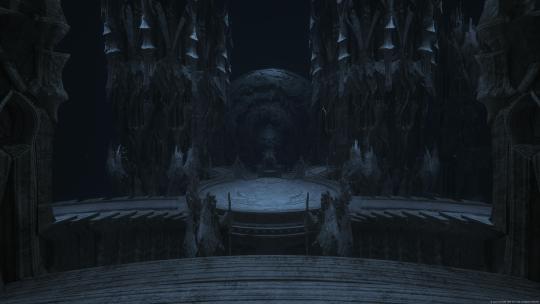
While the framing of the game was not exactly to my liking, the gameplay was a fresh change for the series. A fresh change, but not entirely welcome. It felt like this game deserved a subtitle instead of the mainline marquee of the 16th entry. If they had called this Final Fantasy Valisthea, or Final Fantasy Action in the same way Final Fantasy Tactics was to the point, I think it would have matched the fans tastes a little better. No one wants to order pizza, take a bite, and taste fruit punch. This is a hill I would rather not die on, and while I feel this way, it ultimately would not have changed my feelings on the game as whole, but instead is more of a judgment of the decision makers at SquareEnix. On one hand, it’s great for marketing and ensures a certain number of sales and general interest. On the other hand, you are basically walking into the room and asking for fans' forgiveness. “Everyone, I know this isn’t exactly what you expected, but we promise it will be worth your time. Please give it a chance.” I want to point out that the issue isn’t that the game is completely action focused, but rather that the game is comprised of 40 to 80 hours with an entire cast of characters, and you only get to play a single one. Other RPG’s have taken the action route, but most of them have the sense to offer you access to some of the cast. It would be one thing if they didn’t have any good examples of this, but their own Final Fantasy VII Remake gives you access to play, equip, and customize the entire team, all while giving you a complete action based game. And while Final Fantasy XVI gameplay is fun and has some strengths, it has many competitors that did a better job in the current generation (like God Of War) and several that did it better in generations past.

Where the game really shines, truly surprises, and earns some forgiveness is in the moments where Clive is pitted against the various Dominants of Valisthea. The game is largely broken into three portions. Clive’s quest for dialog. Clive’s battle through monsters. And Clive’s transformation into the kaiju-like god-beast Ifrit, a being they called an Eikon (which I have to point out begrudgingly is pronounced like icon). This final play style creates bombastic scenes of epic proportions. It feels like 3 separate teams were all given completely different instructions on the tone of the game and that no one at any point during the final construction batted an eye when putting it all together. The Eikon battles are so jarringly different from the rest of the game that, like the chapter style, it completely removes you from your immersion in the world. You are shaken from the dark and dour world one team created and into the Godzilla/Tokusatsu, B-Movie of your dreams. It is both entirely welcome and completely incongruent with the rest of the game. At one point in the game, you could swear they forgot that it wasn’t 2008 or that they weren’t making a Sonic the Hedgehog game. And in another moment, you think they were going for Gundam meets Transformers or that Freeza was about to roll onto the scene. This is just another place where the game further deserved a subtitle instead of the titular 16. And while the actual functionality of the battles as an Eikon are simply mirrors of playing as Clive, replacing his sword with claws and firebreath, knowing that these moments are fleeting is a little disappointing. Unlike your battles in the rest of the story, these are clearly numbered. But it is another feature that kept pushing me through the game and a very powerful Phoenix feather in its cap.

As for playing as Clive outside his Eikon form, from the moment you start training as a young upstart knight, it shows promise. It’s simple with the promise of depth. Playing as Clive and zipping around the battlefield feels right. The game grows to give him a myriad of skills that, when used right, allow you to become the god he truly is. I found early on that it is best to cycle through the various control schemes and decide which one fits you best, as it enhances the game as a whole. Growing your skills is limited by the story, unlocking new abilities as you encounter other human-god hybrids called Dominants and taking their power. You begin to look forward to what kind of abilities you will get next. Looking back, it was the most motivating thing, after the story, that motivated me to continue pushing Clive to the end of the game. And while none of them are entirely disappointing, you will be hard pressed to use many abilities beyond the first two trees unlocked. It’s not that the later skills are useless or even hard to use, there are just too many advantages to the first set to bother experimenting with the others. On the bright side, they allow you to completely change out any skills at any time outside of battle by letting you refund the skillpoint necessary to unlock the skills. This gives you complete freedom to try out any combination of skills as long as you have the necessary ability points.
Still, in the moment to moment play of the game, what you come to realize is that it suffers death by a thousand cuts. On the next stop on our autopsy, we get to dissect beyond the good points because every single choice they made beyond those detracts from any enjoyment the game offers. A series of very common, modern tools and shortcuts are completely absent. The first thing is that there is no mini-map. I can understand that this may have been removed in favor of immersion, but because each area ultimately feels like a stage with a very obvious beginning and end, you end up checking your map just to make sure you explored everything. It’s very easy to keep going the “right way” at all times and miss places to explore, treasure chests, or even battles. You essentially can’t get “lost”, which when well balanced, can make RPG’s very fun to explore. At some points the game offers several paths to get to the same endpoint, but you would have no idea if you weren’t checking the map. I must have hit the map button a million times to make very simple checks that the mini-map could have easily solved and kept me playing instead of pausing.
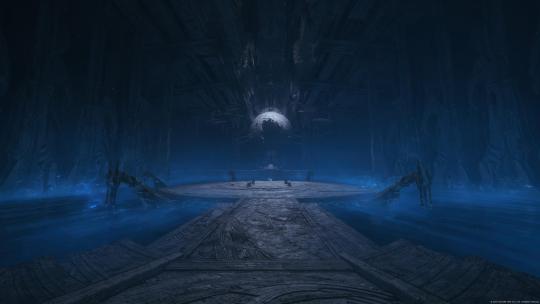
Another immersion choice I imagine was not letting Clive traverse the game at any other speed than a slow, agonizing crawl. You have no ability to choose your run speed, and only get to “run” outside of towns after having held down forward for 7 or so seconds. And if you stop, get ready to wait for the sprint again. You eventually get a Chocobo, but it doesn’t move any faster than Clive’s run. It simply gives you the ability to use a run button. Inside towns, you can only move at a light jog and you can’t at any point use any of your teleportation battle techniques to traverse any faster or just have fun being weird in the town. And yet, this game has giant monster battles and yells fuck at every awkward moment. You do get fast travel, but another weird point of the game is that it recognizes the points (large stones similar to the Arete Stones) are activated because of Clive’s presence, but then the rest of the game acts like what we are doing is not “teleporting”. This means that everyone walks or rides everywhere in Valisthea, including your own party, even though the game recognizes these points. Another very weird choice, as it would have been better to simply ignore it if the game wanted to be “serious” over being “fantasy”. You even have a boatman at one point that I never spoke with unless I was prompted, found in an entire section of your hideout completely unused after you first meet him. It’s a burden to get to know the people living in the hideout because of how large it is and how slow Clive moves, making you want to skip any conversation I would normally have enjoyed having. The dialog is actually a good point of the game for the most part, not exactly in the content of what is said but rather how it is said.

For the most part, the extra conversations feel natural, if not a little too slow. They have weird pauses in their speech, but that isn’t really an issue of the content as much as the delivery. The real sin is that they frame most conversations in this one on one, switch screen between Clive and the target that feels so shamelessly lazy and boring, you are thankful that at least the words themselves aren’t boring. In these moments they pass each other invisible items that make the same sound no matter what it is. And while every item has some small art and very detailed descriptions that mix lore and colloquialisms, it's a real shame that almost every item has no in-world design. The most obvious place you can feel this is absent is in your gear. The only visible gear is Clive’s sword. He can equip a belt and a bracelet, but these are never visible. There is no menu to view your sword as the 3 dimensional object it is without setting Clive up in the perfect position in the Photo Mode. So many RPG’s at this point allow you to view the in-game model in a special menu so that you can really appreciate it. This became a major point that made the game feel so much cheaper than it was meant to. It almost feels like they went out of their way to remove this feature instead of adding it. It would have been minor if there weren’t so many other issues, particularly these kinds of features that are in other games I always felt were minor, but when they are all absent at once, it's very noticeable.
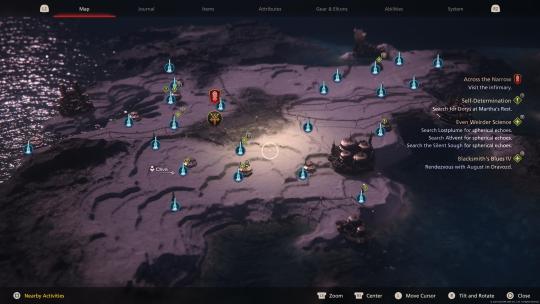
While the pacing of the story is pretty brisk, the disbursement of sidequests is outlandish. Sidequests are a staple of the genre and have increasingly become part of all sorts of games. You would think that a company full of people steeped in the RPG genre would do better in this arena, but this game may rate as one of the worst in both meaningful content and pacing. Most of the quests are not available until the very end of the game, and the ones you play along the way dole out minimal amounts of character content. You do meet and learn more about the characters in the game and the world at large, but none of it feels worthwhile. There are moments where you feel as though you have accomplished something significant, but it makes no difference to the storyline at large. There is no interaction between the quests and main plot, which for a game that is supposed to live in a world of political intrigue, it feels like a completely missed opportunity to deepen the lore. The other facet of the sidequest system are the Hunts. The hunts are largely the standard enemies with extra movesets, hit points, and color changes. They are actually pretty fun for the most part and a fun change on the basic enemy formula. However, the slightly deeper lore and expanded enemies is the only highlight of this whole portion of the game, largely because thats all you really get for doing any of this.
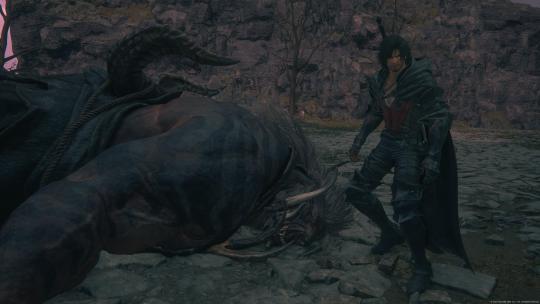
The spoils for quests and hunts are often crafting materials, which already have a limited use. The only person you can equip is Clive, and he can only equip 3 craftable items at a time, and you can’t build accessories. This means that you are constantly getting completely useless materials, that while you can sell, the only thing you can buy are healing items, accessories, or waste on beer and music (which sounds pretty great if this were real life or if it had any effect on Clive and company). The accessories are also largely useless in the grand scheme of the game, as most of them only shorten the rest period of your special moves by minor amount of seconds. You are rarely in need of any special move at any given interval, and simply waiting an extra few seconds for the skill to return is not difficult by any means, especially outside of boss battles. The accessories that increase your stats are also completely invisible. Because of the speed of battle and the general design of the HUD, you can’t really tell how much any stat increases are working in your favor. The HP bar has no numbers visibly attached to it, so when you get hit, you have no real idea how much 50 defense points is really helping, and ultimately it doesn’t really matter anyway. Another staple of RPG’s missing is that Status Effects are almost completely absent in the game, both positive and negative. You can basically up your defense or your attack, but that's about it. Even if they do exist, they must have happened so infrequently, that I hardly found any use for them or was ever hindered by them.
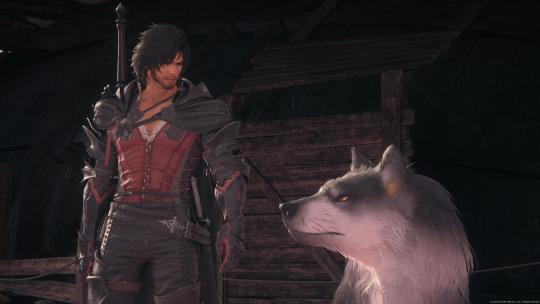
In battle, your only real ally is Torgal, your faithful pup. His abilities are pretty limited and his basic function is to help you continue or finish combos. He also has a heal ability, but it can only heal your most recent set of damage, and by such a small percentage at a time, his heal is largely useless. But not as useless as the rest of the characters feel. You can’t control or request assistance from any other character that works with you throughout the entire game. You don’t have any traditional party aspects. While Jill might be able to freeze enemies, because you can’t control who she is doing it to or when, it’s mere coincidence if it works in your favor. Still, the game shines when you blow away your opponents with your entire arsenal. And maybe in an effort to balance Clive’s overpowered abilities, many of them obstruct the field of battle so completely, that the stronger enemies can still make strikes even though you can’t see them. At times, because of this, the camera is your worst enemy, always focused on Clive’s “sexy little waist” (a line from a completely different review that I can never unread). While your moves continue to destroy the battlefield, the best you can do is dodge around and counter blindly. Clumsy fun is what you might call Final Fantasy XVI’s battle system. It can be easily broken in your favor but that never stops it from being fun.

The backdrop of Valisthea is often a visual treat, but in spurts. Large swaths of the game are simply rock backgrounds or bland terrain. But when you run into ruins or waterfalls, it is quite a sight to behold. Just before XVI came out, I got obsessed with a feature of video games I never thought I would use; Photo Mode. And while Ghostwire: Tokyo was its own special kind of gaming hell, its photo mode was exhaustive. It was like using a real camera and photoshop in a game. I can recall games as recent as Red Dead Redemption 2 have photo modes and graphics so good, they tricked local television stations into thinking they were real photos of their own towns. And this is yet another place that XVI comes in last, with an overly basic photo mode with very minimal options. Hilariously, the camera is not free to move around anything other than Clive, so you have to work really hard to take shots of other people or things. And if you want to remove Torgal or Jill from a shot, tough shit, you can only toggle Clive in and out of pictures, so get ready to maneuver a bit. A quick aside, on the most disappointing aspects to the game is actually one of the most beautiful; the ruins. Throughout the game, ancient societies’ powerful ruins and ships have been hollowed out and used as city centers or bridges or highways. They, at best, get a few lines of dialog explaining them, but never come to fruition beyond that. They are simply pyramids, spectacles hinting at an ancient world, but go nowhere. This might be a little too realistic. The beauty of Final Fantasy and RPG’s is that in most cases, this kind of scenery ends up becoming something other than background information. Another shame because it was not just beautiful, but it looked and sounded interesting. Below you will find an album of every picture I took throughout my time. Seeing it all lined up like that felt like I hadn’t spent 2 months leading Clive through his journey.

As much as I wanted this to be a review, it really turned into a list of grievances. Because the save file doesn’t have an hours played clock, my best guys is what the PS5 recorded as my playtime. I put 88 hours into Final Fantasy XVI, and another 5 or so if you count writing up this article. As I have made clear, Final Fantasy games are an event for me. I look forward to them even if they don’t have a story, setting, or characters that appeal to me. It’s a bit of stockholm syndrome, held hostage by nostalgia. Since the release of Final Fantasy X, I have felt the franchise walk further and further away from me. It made the battles slower and more methodic, added a turn gage, and put a stop to general feeling of exploration. The XIth entry moved online and bloated the experience into a slog with lengthy hours spent leveling up and somewhat trivializing the personal nature of the stories that used to be relegated to a collective cast of characters. In XII, the world of Ivalice brought a broader, impersonal nature to the adventure, giving you deep characters and a wide world, but very little glue keeping all the pieces together. With XIII, we were on rails where there was little strategy in battle, but a bombastic scenery and convoluted story encompassed the cast. The legend of XIV’s epic failure is only encompassed by its meteoric rise from the ashes as one of the best online games still played today, and while it is loved for its story and cast, everyone essentially being the main character in their own right never passed for me. The road trip dramedy of XV and its splintered sales tactics of Anime, Film, and DLC just to keep up with the bland and incoherent story was still blessed with some heartfelt moments between its lead boys. And of all of these games, XVI is the one I have had the hardest time with. There are so many missed opportunities to be a great game, simply by absence of features alone. This game is marked by its absence of not just things that are sacred to Final Fantasy and RPG’s, but by basic gameplay features that would have otherwise elevated and erased this deeply held sentiment expressed before you. This game only treads water on good graces of the old fans and the surprise of new ones. It holds its breath on the talent of its voice cast and how well they express what little they are given. And most of all, makes land on the backs of its grand beast battles which, while tone deaf to the rest of the game, break through the malaise that otherwise would have compromised the game as a whole. Final Fantasy XVI makes land, but only barely. There really is nothing left to say except for, “I forgive you, and I look forward to XVII. Godspeed and Thank You.”
#reviews#gaming#review#Final Fantasy XVI#Final Fantasy 16#Clive#Jill#Torgal#Cid#cidolfus telamon#Ifrit
5 notes
·
View notes
Text
The One That Surprises You || How High We Go In The Dark
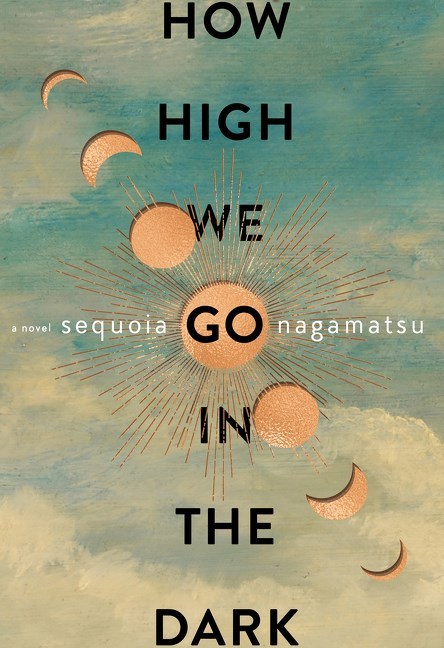
I read in spurts. I will do 10 or 15 books in a year for a few years, then none for a few years. I have been in a slump post college. I tend to think of “reading books” as reading Fiction. In the world of Non-Fiction, I mostly read about the American experience, with a focus on Economics and, independent of that, Black and minority lives. Reading Non-Fiction is study, reading fiction is a mixture of all facets of life, of various levels of pleasure and analysis, of the subject and ourselves. When I read Fiction, a film plays in my head. I even read the book as if narrated by a disconnected voice of authority, the characters slowly coming to life as amalgamations of my favorite actors, their voices ranging from classic characters like Sam Malone, Marge Simpson, Darth Vadar, Wednesday Adams, and Spock. The fog in my brain clears and light hits a silver screen, projecting the words of the author turn for turn. That being said, this is my very first book review. I experimented once with music review with The Weeknd’s “Starboy'' and I felt horribly inept at truly understanding what music was trying to accomplish. I fear that this outing might be the same by the end, but in the spirit of the subject of this review, I will tread foriegn ground for, if no one else, myself. “How High We Go In The Dark'' by Sequoia Nagamatsu took hold of me in a way that I have never found in modern literature, and I want to warn you that it isn’t for the faint of heart, but that it is also for people whom’s heart is weakened and needs to grow three sizes.
I am a man that loves nothing more than an introduction. I think context is important, and as such, I want my readers to understand how I came across this literary find. In an effort to help a friend, my group of do gooders started a book club. We decided that each person would submit a book and we would vote on the winner. It should come as no surprise that the person who this was supposed to help never actually won the vote, which is to say, we did our best. Despite that, on our third book this year, the winner ended up not liking their own choice, “Age of Cage: Four Decades of Hollywood Through One Singular Career” by Keith Phillips, and vetoed the book half way, which started a whole new round of voting. In turn, she offered up the subject of our review. Now, I voted for this book knowing only the cover of the book, the author’s name, and its title. I literally judged a book by its cover and little else. I had decided, despite all reason, that my friends were worthy candidates of my entire trust and simply have not read the synopsis to any book I have voted on thus far, which is the “American Way”, for never better and always worse. The exception being in trivial matters like book clubs. Personally, I chose this book because the writer’s name shared reference to a grand tree. Little did I know I would be walking into one of the fastest page turners I had read in years. It may have well read itself.

You can put down your aperitif, it's time for the main course. To continue to write this book’s praises, I should first give you a brief outline. The story revolves around a pandemic that initially attacks the lives of children predominantly, but evolves in waves that ripple out into the entire population of Earth, leading to a change that affects the course of humanity for millenia to come. Uncharacteristically for science fiction, this story is driven entirely by the humans that are actually living (and dying) in this world. The narrative structure is entirely in the perspective of the people experiencing it. It is a first-person perspective of the ingenuity and tenacity of the human spirit during the darkest hours. Reading what I just wrote, I am not sure that I would have read this book knowing what it was about, but I hope you will look past my inability to describe this book from a bird’s eye view any better than this. It's possible I have betrayed the very thing that made this book stand out for me personally, the sheer surprise of it. There is much more in its pages, but it begs to be read to be understood.
I hate to say that I have more concrete examples of what I don’t like about the book than what I do, but to tell you more would be to ruin the experience it provides. Nagamatsu has a style in this book that is so tender, raw, and visceral, you will wonder how someone can speak so universally about the human experience, but be so pointed as to tell a singular experience that is likely completely foreign to the reader. You feel like a spy in a life not your own, but come out the other end calling them your family; reminding you of your mom, dad, uncle, aunt, brother, or sister. Nagamatsu’s strength is in disarming you, alarming you, disturbing you, and comforting you. You will grow by the end of this book, and it's not even “Self-Help”.

Before we get to my general criticisms of the story, I do have one more major praise. I am not Asian or Asian-American, but I really appreciated that many of the characters expressed their disdain when considering living up to stereotypes or their parents expectations. The story focuses on how we pass the torch from generation to generation and how we are often burned by the passing of the baton. I am mixed race, but specifically appear Black (or really any version of Brown and have been mistaken for Egyptian, Iranian, and Puerto Rican in the same day), and living up to both White and Black expectations has always been somewhat of a burden, easier to handle as I have gotten older and more sure of myself, but I still feel pangs of what Nagamatsu’s characters express. To be clear, this isn’t done in a heavy handed way, it’s woven into the story along with all sorts of other aspects to their characters, and it feels done rather deftly.
Now for our dish best served cold, the critique. Truthfully, I have very few bad things to say that aren’t simply personal taste. As I said, the book was easy to swallow and had me coming back for more. However, what had me coming back was something that ultimately went unsatisfied. Chapter after chapter, there is this lingering sense that you are about to stumble into a true adventure, something that will dazzle you; that the characters are one step away from taking on challenges like Indiana Jones or John-Luc Picard. This may be where going into the book blind led me, rapidly lapping up everything in the book, only to be left thirsty afterwards. Is that the mark of a good book? I can only say that its final pages left me without wanting, happy that I found the bottom of the glass. Because at the end, I realized I wasn’t reading the book I always thought it would become, no matter how close to the end I would get. It was like I was under a spell that was removed only when I finished the book. I am not unhappy, but I still wish the book had turned down those adventurous alleys. For instance, the opening chapter shares a very similar tone to John Carpenter’s “The Thing”, and when the chapter was over, and I returned the following day to read the next, I was shocked that we were going a different way. And this continues to happen, over and over, but I still wanted more.
My final thoughts you may want to skip, as I fear it might give away too much, but personally, this did annoy me. Each chapter leads into the next, often indirectly, but leaving behind breadcrumbs for past or future characters to come. It is almost a series of short stories all told in the same universe. However, because the book is largely in first-person, the characters begin chapters using “I” statements and often takes several pages to even learn who is talking, and thus obscures the connective thread from characters in previous chapters until it almost feels silly that you didn’t see it. I wanted the chapter title to simply say who is talking, right beneath it. I just wanted to escape this nagging feeling like I was missing something in plain sight, or that should be in plain sight.

I apologize for being vague, but I do think that this book is best read to be understood. It feels like a monumental feat somehow, like I hadn’t experienced literature in a long time, or at the very least, in my time. All the great books seemed to have come out before I existed, and the ones that have come out since then, maybe I have never fully trusted. In being surprised by “How High We Go In The Dark'', I feel like I can open up to more modern literature, maybe take the practice of “reading books” seriously again. I either have always read for fun or to be moved; reading something superfluous or reading something serious. I haven’t taken Fiction books seriously because the ones I tend to read aren’t trying to move the reader in any obvious way. I have always left that work up to Non-Fiction. Sequoia Nagamatsu may not be the first or the best in this genre or with this type of literature, but he is the first to make me feel this way, and it never would have happened unless I had been willing to be surprised. To go where I hadn’t gone before. It also wouldn’t have happened if he was any less of a writer, so to that end, I would like to thank him. Do yourself a favor, reader, and challenge yourself to this book. It is often sad, heartbreaking, and scary, but more than anything, it is boundlessly hopeful.
#Review#Books#Book Review#How High We Go In The Dark#Sequoia Nagamatsu#Fiction#Pandemic#Sci fi#Science Fiction
6 notes
·
View notes
Text
Path to Power || Thoughts on #GitGud Culture

Attaining anything comes with a cost. Time. Effort. Opportunity. Games are no different. We play games because they can take a larger scenario and minimize it, speed it up, and in most cases to further our entertainment purposes, narrate it. We consolidate challenges into bite size playscapes, assign logic and rules, and pass it along to the challenger. Games inherently are assigned stakes, ones that are generally agreed upon by the designer and the player. These stakes can be personal, financial, both, or neither, whatever enhances the player and designers experience. The free form nature of a game's creation is as exciting a place to work in as it is to deliver to another to play in. The interesting distinction is that, much like exchanging foreign currency, the cost of playing a game is completely dependent on what you are willing to spend to play it. And on the other end, the value of that experience isn’t always equal to what you have paid for it. Trading the experience on the open market is also entirely dependent on what you played, how you played it, but not necessarily what it cost you to play it. As a sporting society, we all depend on the rules of play to determine where a challenge belongs in our hierarchy, where we belong amongst each other, and the overall value of your play on the open market. The two questions I will examine are: What is the cost and value of variable difficulty in games? Is a game art, sport, or function?
In accepting the game and the inherent challenge in the designed experience, we enter into a de facto agreement as a player with the designer. This agreement is that at the cost of our time, we will play the game as it was designed. This is assuming of course you aren’t augmenting the game outside of the parameters of the game, which for this discussion, the initial game and any updates released by the designer will be considered the spec for this conversation. The options menu will have a set of parameters to alter the challenge in the way the designer sees fit. In adding a slider that alters the level of difficulty, let's first discuss the cost the designer incurs. In this case, we aren’t really concerned with the time it will take them to add this slider, as when we buy a game, we don’t generally consider the amount of time it takes the designer to make it with respect to the challenge specifically. Keeping that in mind, no matter how many times I have mulled over this, the only cost I can determine is their own artistic vision.

They often say that art isn’t just about the strokes you paint, but also the strokes you don't. Music isn’t just the sounds of the notes, but the silence in between. Basically, outside of the time it would take to implement difficulty changes, it only costs them their art, which most artists would say is everything. If you can’t make the point you want to make the way you want to make it, why even bother? You could argue that if it is important enough, you will compromise, but in the case of art, it is generally understood that the art itself is just as important as the point of the art, if not more so. After all, you could simply explain your point in many other ways. You choose the method of your art because it means something to you. I would rate the cost of this compromise in this case as being high. In this way, both the cost and the value of creating something as you see fit is tied to the creators desire to make that something with or without compromise. Meaning they are essentially equal. Interestingly, as the creation is accepted and lauded by more and more people, the value of the design is increased and thus the cost of altering the design also increases, because the alteration could adversely affect the popularity of the creation, though this is more of a speculative assessment. The creator may not ultimately care if anyone liked their creation, but this just further strengthens the rule, in so much that the cost of making changes stays the same as the value in the case of uncompromising art.

When a designer makes a game with a difficulty slider going in all directions, it implies that the point of the game isn’t specifically in the challenge of completing it, that it was meant to be experienced in a number of ways other than just one, like any other parameter the game has to offer. However, the lack of a difficulty slider doesn’t inherently mean the difficulty was integral to the art of the game either, just that it was designed as part of a whole. A painting usually consists of changing tones of color, but the painting can only be called a painting if you put paint on the canvas. A game can only exist as a game if it has a challenge. In both cases, it doesn’t imply that the change of tone or difficulty have anything to do with the artist's intent, it’s just inherent in the creation of the object as we all understand it. With that in mind, not every perceived element of the design is intentional, nor is every perceived absence, however, there is often a sense we, the consumer player, possess at determining which is which. In the case of #GitGud culture, entry requires an understanding of the designed difficulty, a gatekeeping mechanism meant to define what is and isn’t a challenge worthy of participation in their ranks. It has become understood that Soulslike games are made with the intent of being something the average player would struggle with to master and they are created for the sake of overcoming that struggle. So we can continue with the assumption that the game’s difficulty was intended and thus integral to its artistic merit.

When discussing games, how do we define the difference between art, sports, and function? First, when I say function, I mean a mechanism that holds no artistic merit absent abstract observation, like a hammer and nail. The hammer’s function is to hit the nail so as to fasten something to something else. It performs a function. Video games are full of functions, all of which collaborate to create something more, either in the functions that hold the game together, like code calling classes or rendering art, or in the games design like physics or gravity. By themselves, the game’s physics are simply a function that tethers objects to our reality and maintains the laws of the game’s nature in a three-dimensional environment. The art of physics is in how they are applied, how they either differ or maintain distinction from our own real living space. Function is not art, but applying function can be artistic. The way Mario swings Bowser while grabbing his tail as we spin our joystick is entirely function, but the movement Mario makes and the visual of Bowser flying out of the arena is function colliding with art.

Let’s take for example the game Rocket League and the sport Basketball. Rocket League is a hybrid of cart racing and point based sporting within an arena, most popularly a mixture of RC cars and Soccer. The game is made up of hundreds of artistic assets, filled to the brim with different car designs and decorations to personalize your game avatar. The arenas are largely just big square cages in which your personal car is used to nudge a ball into the goal of the opposing team. Like Basketball, the rules that makeup the game, the game itself, is not art. It is a competitive event that pits individuals against each other to see who has the better players and strategy to succeed at getting the most goals by the end of the time frame. Basketball as a concept, its rules, is the reason that the players are gathered together. Rocket League is the reason players are logging in. The competition is entertainment. And in both cases, while they are not art, it was a mixture of art and function that created them. You could argue that the way you play the game is art. But not the game in and of itself. In Rocket League, when the ball explodes when entering the goal, that was an artistic decision, it was conceived by a designer and directly impacts our perception of the game. The same is true of Mario throwing Bowser. It was designed with intention. Someone had to conceive of these flares and implement it. And while these two games have that in common, the aspect that is missing that ties the game more directly to art is narrative.

Games as an art form is like saying painting is an art form. Humans have the tendency to assign narrative to situations that are devoid of them. It helps us connect with whatever has our attention at the moment. Even the most banal of art, say a picture of a lighthouse in a hotel room, is still largely considered art because it emotes, or in this case, it begs us to emote for it. We participate in it, even if only for a moment, we know it tells a story. Even a painting of three squares or maybe even just a line, when framed and given abstract observation is now art. Mario games, however scanty, have a defined narrative. Man trying to save Princess from Lizard. Even if it never spoke a line of dialog, it would be clear to us that we had a goal that had a layer beyond competition. And it's the intent that we understand this that sets it apart from other games that appear to have narrative, like Pac-Man. Yellow discs eating ghosts isn’t a narrative. We do not know his purpose, its abstract nature begs us to pay attention to getting points, not saving the world. It has no beginning and no end. Some games defy narrative entirely, looking instead to focus on competition. Rocket League for example. It has no clear story, no clear abstraction for us to frame, its focus is to get us to play the game. It doesn’t want to distract us from its purpose as a sport. If you watch any modern sport, like Basketball, the story is on the court, and it's about the game, but the narrative is strung together by the personalities of the players, separate from the actual game itself. Their disposition, skill, and injuries affect their play, but the game itself is unaffected, its rules are unchanging. Its rigid structure and consistency are pure function. It is not art, but we still have a desire to make art out of it.

Narrative is the strongest connective tissue between us and the object when viewed as art. We either create it for ourselves, or it is designed for us. In the case of games with narrative, this would be the final piece of the puzzle wherein I would consider the game art. We discussed how some games have no intention of being viewed as art, they are merely competitive in nature, either against yourself, the computer, or someone else. They are made up of artistic assets, the nature of designing a game is art, the way one plays a game can be art, but without direct narrative intent does a video game really ascend to wanting to be viewed as art, where it transcends its competitive function for something more. Pac-man is not trying to make a point. Gallega is not trying to make a point. They wanted you to play a game, solve their problems, and excel in their design. If the game played itself, we might have assigned narrative to Pac-man’s abstract nature, but only if it was framed in that light. Our input turns the object's artistic abstraction into a function. It transitions from art to function. However, when we play as Solid Snake entering Shadow Moses, the transition between our play and the narrative is happening in tandem. It maintains its state as art while we play. As we complete challenges, its cameras switch and sweep, chosen for both its aesthetic location and to further alleviate or elevate challenge. It is designed with the intent of being art. Games are not inherently art but can be framed as such. Art does not denote quality. If I were to pull a random picture from my phone and show it to you, it would not be art. Unless I told you, this is my art and asked you to contextualize it as such. But even this may not be enough for you to accept that. So maybe I print it and put it on the wall. Suddenly, it must be accepted at the very least as art, though it may not be good art. Art has to have the intent of being art, but it also must adhere to the understanding of art abstraction.

This exercise was mainly to make one point, that Soulslike games can be art and that once something reaches that threshold, it deserves to be protected from compromises the creator does not want to make. As a game, the FromSoftware games have long adhered to all the artistic merits we discussed. It is not a sport and it is not simply a function, though you can find both of those elements in the game. After all, people will make competitive things that were never intended to be, like speedrunning, but that is outside of the creator's hands at that point. Even games that are only sport or function were still created through strokes of art. Creating a game is an art form. If you change the rules of Basketball outside of the agreement of its participants or governing body, it is not really Basketball anymore. Streetball has a series of rules intended to make the game easier to play on the fly. It may adhere to Basketball's main tenets, but you couldn’t stand on the world stage and declare yourself to be playing Basketball the same way as the players in the NBA. The games are similar, but the rules are different. It both is and isn’t Basketball. Unlike Basketball, it's not as easy to create a video game, but if you were to remake all of Dark Souls with an easy mode, people would still tell you it isn’t Dark Souls. That game was made by FromSoftware designers, and what you have done, while similar, is still different. They own the right to their design and you to yours. And once you have made such a product, as art as it may be, the holders of such a game might even go as far to say it isn't a Soulslike because it doesn’t adhere to one of its key principles, a difficulty curve that the average player will understand immediately as “hard” with no retreat.
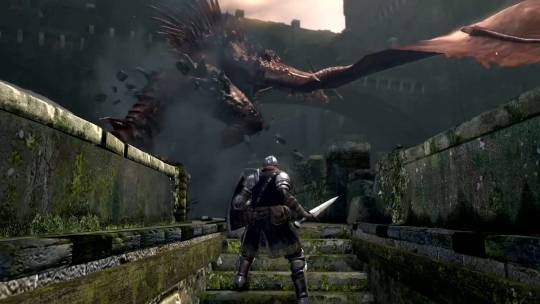
This is how it affects our Path to Power. The cost of entry is relatively low, the value of success entirely dependent on yourself, but the distance between entry and success is meant to be long and arduous. The art of the game is not just its narrative or its assets, but its distinction from other games in that you are challenged beyond average. While you may want a way to experience the narrative and assets without the challenge, that wasn’t what the artist intended. This particular path to power is governed by the designer of the challenge. As a player, you enter into the agreement, as held by the abstract governing #GitGud body and the designer of the game, that if you complete this game as it was designed, you not only get the bragging rights, but the right to experience their art in its entirety. If an artist installed a work on the top of Mt. Everest, only those willing or able to get to the top could see it. Money, time, effort, means, those are all your domain, but the artist doesn’t need to change their venue to meet your needs. If the experience is worth the cost, you will find a way to obtain it. The path to power can be easy, and that's great, but not all challenges are made equal. I think we should be thankful for that. Though possibly toxic at times, #GitGud culture is actually working as a protective force in the frame of artistic integrity. Variety is the spice of life and artists wouldn’t have it any other way.
#Articles#Elden Ring#GitGud#Git Gud#Get Good#gaming#Dark Souls#Soulslike#Castlevania#Rocket League#Super Mario 64#Kirby#Basketball#Video Games#Pacman#Gallega#Stranger of Paradise#Sekiro#Speedrunning#NBA2k21#Princess Peach
1 note
·
View note
Text
Climbing a Mountain || Thoughts on #GitGud Culture
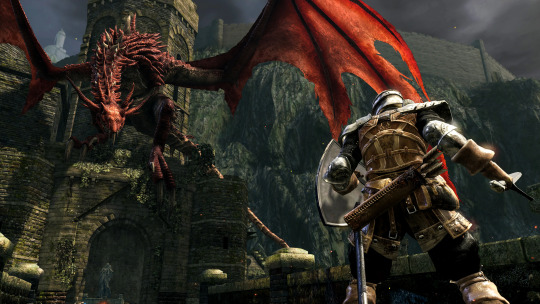
Challenges can be addictive. I am writing this now in an effort to pose a challenge to myself on the subject of culture that has taken shape and formed around a single gaming company’s product. #GitGud culture. “Get good” they tweeted into the void, hollered into the mic, pounded into their phones. They would go on to challeng their philosophical opponent with this mentality. From the first time I heard this chant, this call, my first thought was, “What else are they supposed to do?” What was “Get Good” an answer to? If it was on Jeopardy, what would the clue be in the blue box? From what I could tell, it boiled down from a general discourse around difficult aspects to FromSoft's game design, something I only learned recently reaches far into the past, to some of the first consoles, to gaming’s adolescence. This conversation probably started out something like this: “How am I supposed to beat this boss?” lamented Person A. “If you do X when they do Y, you can successfully beat this boss.” Person B calmly stated. “What? That's really hard. How do they expect people to reasonably do X?” cried person A, to which Person B stoically replied, hashtag in the back of their throat, “Get good.”
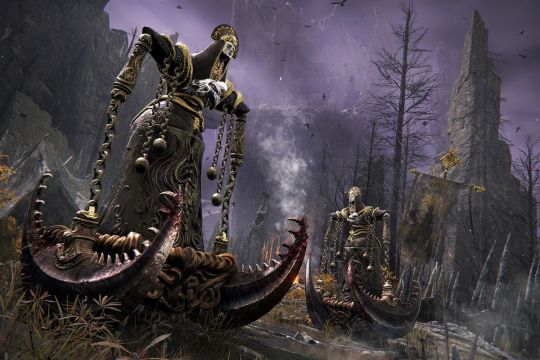
Person A was startled by the challenge. It was simple but also an impossible feat. What initially looked like a simple hill became a mountain to their eyes. Being told that one would have to get better to succeed suddenly made the challenge more real, as if all their gaming experience to this point amounted to pebbles next to boulders. Person A was challenged to take stock of who they were. Person B made this very personal. When some people see mountains, the take the first step to the top. Some people turn around or look for another way. And others, they curse the mountain for even existing. They can see nothing else now. There is no path forward, no path back. They build a village at the base of the mountain, warning travelers of the challenge ahead. The village grows as travelers agree, the mountain is suddenly the source of all their ire. But there was another village, and it too was growing. The village at the top of the mountain was filled with people who saw the mountain and welcomed the challenge, informed by those who came before them, their hints carved into the ground. These adventurers could see that the mountain was built to be conquered. At the top they were met by those who succeeded before them. They reached out with a hand and said, “You did good.” But this tale started with a challenge, a challenge not from the mountain, but from a friend. Had Person B never spoken those words, “Get Good,” would that hill have ever become the mountain? Is “Get Good” culture negatively divisive? Is it simply pointing out the difference between success and failure?
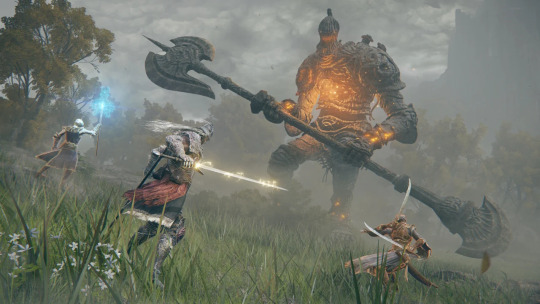
This has largely been where my thoughts have drifted over the last few months. #GitGud culture had the very strange effect of taking something I always took for granted and had me actually inspect it. I have been playing video games since I was around 3 years old. And by this I mean most of my early memories revolve around games. How good I actually was back then is lost to the ether, like most experiences pre-internet. But something that was always present was the challenge. In the early console days of gaming many games were, looking back, often given arbitrarily hard difficulties as a way of extending the playtime and thus the value of the game. More time spent playing strangely meant more value for your dollar. And this was true in a sense, early consumers expected an extended experience, either by the length of the game or because the game was challenging to beat. If you bought a puzzle that didn’t tell you how many pieces it was in, and you opened it to find only two, you might feel you were ripped off. On the other hand, if it was in two hundred thousand pieces, you might also feel ripped off. In that way, video games are largely puzzle boxes without the pieces identified. Even video game trailers often hide what's really inside the game. You can’t really tell how you are going to feel about it until you get it in your hands. Or a trusted source explains it to you. Maybe a villager at the bottom of the mountain. Maybe one who has been to the top and felt it wasn’t worth it. Maybe one who quit halfway. Still, a truly polished game always would shine through. Well thought out challenges won the hearts and minds of the gamers who played them. Super Mario Bros had a very well thought out difficulty curve that kept people coming back again and again. It may have even tricked the player into thinking a mountain was just a hill.

In this way, it might seem that “Get Good” culture is actually shattering the perception that the challenge is actually surmountable. By being told to “Get Good” at the first, second, or thirtieth sign of trouble, your eyes might no longer be focused on the challenge directly in front of you, but the goal at the top. You are now looking ahead and seeing the game for what it really is, a series of increasingly difficult challenges that ultimately only reward “true” satisfaction when the creator has agreed that you bested all of their challenges, and awards you with the credits screen. The satisfaction at the end of an individual challenge is now soured, because while each step gets you closer, you recognize how much they are really asking of you. Maybe you walked into the game expecting leisure, and leisure isn’t necessarily meant to be challenging. Maybe it makes you rethink what you are even doing here, right now, in the moment. “Get Good” calls on the person to become introspective, in their leisure time, during a challenging moment, and offers only another challenge. With this mirror in your face, you suddenly find yourself face to face with a true challenge, one that you can’t really escape. You will always be you your entire life. The game was a chance to forget that, become someone else. Your “someone” is then given a challenge for you to solve, but you have no answer, so you look to friends and allies, only to find that upon receiving their advice, you in fact are the real challenge.

Upon reflecting on yourself, looking to the top of the mountain, you ask yourself is the gold at the top even worth it. You sit and contemplate. The mountain is now very popular and people are passing you by. You stop a fellow adventurer and ask them, “Why are you doing this? Is it really worth it?” They smile a gaped-tooth smile and say, “This is my 3rd time up the mountain. This time I am doing it without legs. The village chief at the top rewards those who succeed, but the people reward those with even more praise if you make it harder on yourself.” They carry on, pulling themself along the ground, naked, as they drag themselves across the rocks and up the mountain. Look around, you are surrounded by loud veterans, all chanting in unison, “To the top!” Their stories of success sound so sweet, but you’re met with only bitter thoughts of the challenges ahead, the ones they pass through so easily. They are your kin, like minders you thought, but how could they be so different. You head back down the hill, defeated and questioning if you belong. There is no way into the village at the top of the mountain without climbing. Back in the village at the bottom of the hill, you feel the ire filling you up inside. You consider becoming a permanent resident. Until someone sidles up to you and says, “You know, there is another way to climb a mountain.” Desperate, you beg to know the answer. They reply, “Pick another mountain.”

At this point, it is really clear what “Get Good” culture is and how it works in the mind of a gamer. But why is it divisive? From my perspective, it is because while other games for a long time were chosen because of their appearance or style, this genre is chosen simply for its difficulty. And that's what is really happening here, “Get Good” is becoming recognized as a genre. The story or visual design of the game is second to its mechanics and the difficulty of mastering said mechanics. In the case of FromSoft, they casually make the story harder to engage with by comparison to what has become the norm up to this point. In the early days, imagination was used to fill the space between representative graphics and the text in the manual or on the screen. Now, largely games are as narrative as other moving audio/visual media. Gamers for a long time have accepted that if a game was a wild west adventure or a space opera fantasy, that simple difference could turn fellow gamers away, and that was fine. And unlike other media formats like movies or television, you wouldn’t feel anything by turning down them simply on their genre alone. But something special happens when you add input into the process, when you are given control to navigate the media, the challenge of getting to the end becomes a matter of intellect, skill, and prowess at your hobby. And yet, most people would not take up the challenge to read a book on the challenge of its words alone. Games as a media have the perfect mix to stir up the nerve and maybe false belief that anyone or most people could succeed if they simply tried. If they “Get Good”. So when someone tells you to, “Pick another mountain,” they are offering you a new challenge. Challenging you to be humble.

The introspective rollercoaster of “Get Good” continues to push you to reassess your hobby, your time, your skill, and now your ability to live with moving on. Right behind “Get Good” is often “Cope”. Both of these concepts are often said in jest but heard in objection. Despite being obvious or inevitable, they mock the person going through these feelings. It makes it seem like your only recourse is to succeed at the direct challenge in front of you or walk away in shame. In reality, this all a matter of perspective. Kin at your back mocking you are not really your kin. There is no mountain in this hobby you have to climb. Your life is important, how you spend it is important, and how you feel while you do it is also important. However, it doesn’t make the challenge any less true. To succeed at a challenge you are failing at, you will have to get better. To walk away from a challenge you can’t defeat, you will have to cope. But how you do either of these things is entirely up to you, to a degree. Maybe your whole life, coping isn’t something you were taught to do well. Therein is another challenge. They never stop. And you will also never stop getting better and failing and succeeding. “Get Good” reminds us of all of this in an instant, conscious or subconscious. Something said so casually, in jest, is powerful enough to stop us in our tracks. And when something stops us like that, we might quickly grab at our worst emotions. But you have to go through the whole bag before you learn to find the right one.
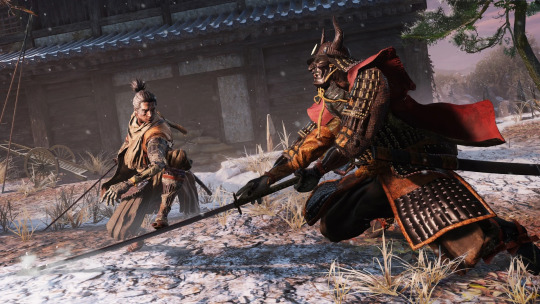
Regardless of where you land on this, you will grow. Maybe you’ll be a an angrier person, living to spite those who try or those who build hard challenges. Maybe you’ll find a more humble person, one who can categorize their failure to get to the top of the mountain or even try as a successful attempt at recognizing how you want to spend your time and solidify what you actually want out of life. Maybe you’ll put the climb on hold while you hone your craft in other ways. No matter how you slice it, this is what suffering under “Get Good” brings. This is why it's a divisive battle cry. It spartan kicks you right down a well when you least expected it. It challenges you without asking permission, because this challenge was always there, and it always will be. Even after you accept everything you see in the mirror, the mirror will always be there staring back at you. You might as well play the game. Well, a game you actually like. You might see someone smiling back at you.
#Gaming#GitGud#git gud#Get Good#dark souls#fromsoftware#Eternal Ring#Sekiro#Dark Souls#Soulslike#darksouls#Bloodborne#Article#Articles
0 notes
Text
I Am Vengeance || The Batman

During the pandemic, every event was ushered in with a quiet excitement, as if you might scare a new Covid variant into existence if you get too excited about anything. When the first trailers for The Batman hit, that excitement was anything but quiet. The sound of the tape ripping from the ream as the DC logo stuttered onto the screen caused a stir in my little Bat-fan heart. It signaled something different, quiet, disturbed, and serious, in a way modern Bat-films had not been. We have had the zany Adam West of the 60’s; the brooding and intimate Keaton/Burton of the 80’s; the unhinged Schumacher universe of the 90’s; the grounded realism of Bale/Nolan’s Dark Knight trilogy of the 00’s; the angry edgelord Snyderverse of the 10’s; the comedic (and incredible) whiplash built of Lego and classic Arnett delivery. Now in the 20’s, we are getting a taste of Matt Reeves, who must have been one of those kids that mixed every soda at the fountain stand, because The Batman is a suicide cocktail of the last 60 years of Bat-cinema. Not every flavor is distinct, but they are all entirely present, one way or another. And while I sat in the theater soaking up this concoction, I couldn’t help but wonder if everyone else in the theater was enjoying the taste, because when it comes down to it, this iteration was a Batman Film for fans of both the Man and the Medium. Riddle me this: What has no taste but makes a living telling other people how something should taste? A critic.

I wanted to go in this film as blind as possible when it was clear the film would involve riddles and mystery. Outside of the trailers and some press junket headlines, I really didn’t know what the film was about. I did this in hopes that things would unfold in a way that would entice the senses, but having come out the other side, I can honestly say knowing the premise will not make much of a difference. The film follows Bruce Wayne in his second year as The Batman, established as a shadow behind every criminal, a symbol darker than any version we have seen on screen to date. What Nolan and Burton paid lip service to, Reeves delivers with visceral imagery. The Batman is an unrestrained lunatic that stalks seemingly random bad guys, all while under the night sky emblemized with his classic, shattered symbol. While violently righting wrongs, the story begins with The Riddler committing a heinous murder of a high profile figure, one that has detective Gordan calling in the Batman to help solve the crime. This is the first time we, as an audience, are actually put in Batman’s position. We aren’t privy to any information he isn’t. We get to solve the crime with him. We get to turn the pages of the comic books that made him the world's greatest detective at the point when he hasn’t yet realized that is who he is to become. It feels thrilling in a fresh way. The film spends its runtime ruminating on the meaning of justice when the means is vengeance. Its not a question Batman films have shied away from, but they certainly didn’t spend the entirety of the film on it. Bruce and Batman are on display in equal measure in a way you have never seen before. Tim Burton pointed at Bruce and told us he was a weirdo, Reeves is showing us how weird Mr.Wayne really is.

Before we discuss the delivery, let's discuss our deliverers. I have been a fan of Robert Pattinson since his Twilight years. He was largely the reason I saw every single film in the theater. Well, that and because it made a really great date night. But his later filmography is obviously where he began to shine, including my personal favorite, Good Time. The rest of the cast is also a bright spot, specifically Jeffery Wright as Gordon, Colin Farrel as Penguin, and Zoe Kravits as Selina Kyle. This isn’t to say our lead villain, Paul Dano as The Riddler, isn’t great, his line delivery is quite the spectacle, but it feels a bit off brand for The Riddler we know as fans. Instead of being a man who loves puzzles with a bent for the spectacular, we get an intelligent psychopath ala films like Seven or Saw, which clearly inspired the cinematography and general tone of the film as a whole. Jeffry Wright plays as good a Gordan as we have ever seen, but what really sets him apart is that we finally get to see him really working with The Batman, almost like a partner. Wright makes the relationship believable. Colin Farrell makes the least sexy villain sexy as hell because he can’t not. That's all I really have to say about him. And then we have Ms.Kravits, a Catwoman for the ages, someone who was able to bring to life a character that since Michelle Pfieffer has consistently missed the mark. Kravits moves like an animated character in every frame she is in, and while it feels detracting in some moments, it elevates others, just like having a real cat.
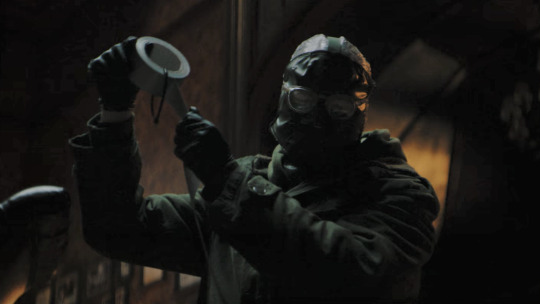
As for the answer to the real question, the mystery at hand, is The Batman a good film? Well, it certainly could be said so for long time fans, but I am not so sure this is true for the casual viewer. The girl next to me literally fell asleep, which I wouldn’t have noticed since my eyes were glued to the screen, but her boyfriend nudged her and loudly said, “Are you awake!?” In all honesty, if I had one major critique, its the runtime. This film gives us so much, but the cost is the runtime. At 3 hours, the film has no real consistent pace that lets you know which act you are in, or how many acts there will be. If you are into the film, you may not care, but there are moments that drag, especially for a murder mystery. The film rocks back and forth between detective games, murder psychopaths, seedy nightlife, and The Batman kicking ass, which all sounds great, but in practice, its a bit off. Each of these moments vary in length and come at the same pace as watching 6 episodes of a miniseries instead of one well-made film. On the other hand, every image on the screen is a beauty to behold. From the disassembled Batmobile's rocket engine to the large sweeping scenes of New York/Chicago/London Gotham, all the way down to the gritty streets and excellent costume design. In fact, a highlight of the film is Reeves’ Bat-suit. If Burton’s was comic, Schumacher’s was Hollywood, and Nolan’s was military, Reeves’ was homemade with love. It was stapled together by a man who only knew he needed to survive on the streets his family built. It is sad to say that the films first act is its best act, it really feels on track for the first hour, but after being lead into the mystery, the film find itself in the weeds and lore of Gotham's ruling underclass, something comic book readers and gamers will know well by this point, but will leave everyone else a bit lost. Its not that Reeves’ relies on you being a fan, but it certainly helps, as lots of interactions go unexplained, rising and falling without much to explain it. I think being a fan makes it feel like you are getting the inside track on a story everyone else is missing out on. The runtime is also especially galling when Batman: Mask of the Phantasm balanced the lore of Gotham, Bruce Wayne, Batman, and a great detective story with real emotional depth in under 90 minutes almost 30 years prior to this film.

Its hard to be critical of this love letter to Batman. It pays homage to films of all walks and the great Batman mysteries of the comic books and graphic novels of the last 30 years at least. Its a welcome change from the DCEU up to this point, but it does feel a bit like a high budget, late stage episode of the Fox’s Gotham television series. Actually, that's not entirely fair, not really, but when you make a suicide soda like this film, with a little taste of every on-screen and on-page Batman, you're bound to pull in the odd off-brand Dr.Thunder. I look forward to the future of this film series and I pray for its ultimate success. Pattinson, Reeves, and the entire team brought to life something we only got a glimpse of when Heath Ledger made the Joker a reality; when Michael Keaton asked us to get nuts; when Bat-nipples taught us we could go too far; when DeVito showed us how far we could really go; when Tommy Lee Jones ripped up as much scenery as the makeup on his Two-Face. The Batman can really do no wrong as long as it keeps being true to us. True to the fans. Long live Batman and good luck Matt and Patt.
#Film#Reviews#The Batman#Batman#Robert Pattinson#Matt Reeves#Zoe Kravits#Paul Dano#Jeffery Wright#Comics#comic books#graphic novels#The Riddler#Catwoman#DCEU#Synderverse
5 notes
·
View notes
Text
Learning to Run || Super Mario 64
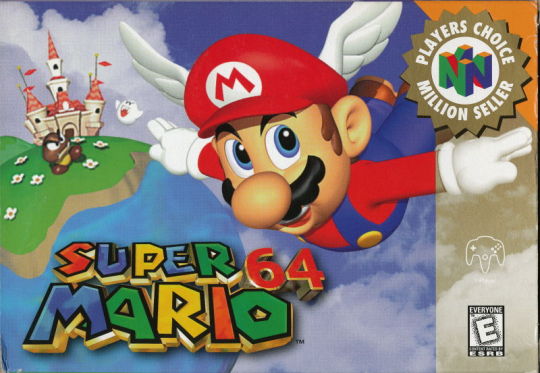
I can still clearly remember the morning I was given the Nintendo 64 and a copy of Super Mario 64 almost 25 years ago. It was a very dark Christmas Eve Eve morning, but not because it was early, but because a storm was rolling in overhead. If you can believe it, getting this present would cause this to be a holiday to be one of the longest in my life. Every year, a couple days before Christmas, we would make the 300 mile drive to my mother’s family home to share in the festivities of gift giving and in-law fighting. Now, if you can imagine, since we weren’t having Christmas at home, that would normally mean our presents would migrate with the child for whom the gifts were for (ahem… me). However, because I was but a child and was prone to mistakes and forgetfulness (a family trait I assure you), one Christmas I forgot a few of my presents at my mother’s family home, an error in which I would continue to be punished for year after year, for I was no longer allowed to bring any presents my parents bought for me. As we all know, your parents get you the best things, the things you actually asked for, the expensive things. This was the first year of the new rule and I got to choose whether I would open my presents before or after the trip. Because I was 10 and waiting is not something kids know how to do, of course I made the terrible mistake of choosing to open them before we left. And wouldn't you know it, right before my eyes was a brand new Nintendo 64 and a copy of Super Mario 64. All this rich three dimensional goodness would have to be left under the tree in my house, far from my grasp for several days. Like burning your hand on a hot stove, it felt like every second I was away from my new gift was another second with my hand over the fire. The 4 hour drive, which as a kid already felt like 40 hours suddenly felt like 400 hours. No Gameboy, comic book, or cassette tape would soothe my aching soul. Oddly this has become one of my favorite memories, maybe more than actually getting home to play Super Mario 64. However, I haven’t actually been back to play the game since about 1998. Time moves ever forward and I had the good luck to find new games and new friends to play them with every year. While I have replayed many other games across many different, this 64-bit wonder wasn’t one of them. After having waited 4 years since the Nintendo Switch released, hoping to hold out for a “Switch Pro”, I finally broke down and bought the OLED edition, along with Super Mario 3D All Stars and Super Mario Odyssey. When both games game in, I was suddenly struck by how long it had been between the newest Mario adventure and the 64 juggernaut. I wanted to get a feeling for how far Mario has come, how far Nintendo has come, so I decided I would complete Super Mario 64 before moving on to Odyssey. I was shocked by how much I never realized about Super Mario 64. Specifically, it's very creation is the foundation for all first party, 3D Nintendo games.
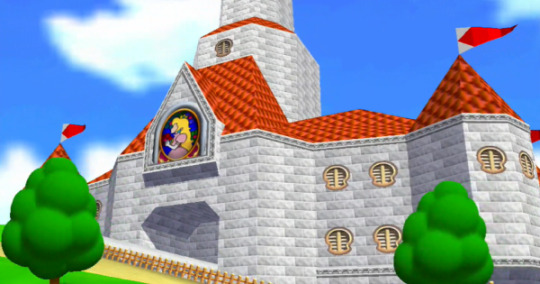
The first thing I realized about playing Super Mario 64 after being locked in my mind palace for 25 years was how often I played every other Mario game in its orbit. It could be that the game was locked behind the toyish and annoying N64 controller or that games on either side of it were just better. It was the former, and that was something I realized almost immediately. Controlling Mario and the camera was a real blast to the past. About midway through the N64/PSOne era of games, game developers realized how to merge camera, character, and player; how to allow us to move in a three-dimensional space. But you have to walk before you can run, and Super Mario 64 was basically the Microsoft Solitaire of the Nintendo 64 world. Microsoft Solitaire and Minesweeper were game tools built to teach users how to use the mouse to interact with their new Windows desktop. It was the Super Mario Bros. of the Nintendo Entertainment System, a game that taught us to run to the right. It was a tool to teach us, the player, what it would be like to play in a Nintendo’s 3D space. It was also a learning experience for their development staff, training them how to implement and design challenges. The N64 only had a single joystick with D-Pad and “C”-Pad buttons on either side. This limited the design of 3D camera movement, locking character and camera movement to a single axis with auxiliary control to the C-buttons. Primarily, Super Mario 64 was a demonstration to gamers and third-party developers of everything they expected was capable of their system.

This led me to my second realization: the sheer lack of actual world creativity. For as challenging and interesting as the game was, it lacks any real cohesive world. If you imagined you would be playing the Super Nintendo’s Super Mario Bros. evolved into the third-dimension, you would be severely disappointed. Or you should have been, but the sheer spectacle and scope of this new game was unlike anything we had ever seen. It was a truly accessible challenge for any gamer of any age. It was a smokeshow meant to redirect our attention from what Super Mario Bros was and what the new dimension could be. A challenge. They constructed over 15 worlds, 3 Boss worlds, and some Sub-world challenges, a series of increasingly difficult stunts that would require us to learn a whole new set of skills that we would use to play every single new Z-axis addition game. Nintendo basically did a service to the entire gaming sphere, to anyone who would pick up their flagship game on their new console; they taught an entire generation to walk so that we could run. In a way, Super Mario 64’s possible evolution was a sacrificial lamb; the next evolution of Super Mario world building was left behind so that they could learn to build and we could learn to play.

This led me to my final observation, one about the Mario-verse as a whole and how it relates to my taste as a fan. Super Mario 64 makes every other Mario game around it much more significant. It spends no time at all building a world you will truly write to memory. Super Mario Bros. for the NES did the job of world building and teaching us to play. With Super Mario 64, Nintendo chose to focus on the end game, to look to the future, knowing they would be making 3D games far into the future, they taught us to play instead of building a real world. They taught us how grass would feel beneath Mario’s feet, how sand would slow him down, how ice would make us slip, how water would cause us new nightmares in learning to swim, and how hard it is to learn to fly. Nintendo has been known to read the future wrong, to be a bit of ahead of themselves, but teaching people to play in the 3rd dimension wasn’t one of them, even at the sacrifice of world building. Super Mario Bros gave us a fictional landscape. Super Mario Bros 3 gave us a theatrical conceit for our imaginations to grab. Super Mario World a literal connective tissue for the landscape of Peach’s kingdom. Super Mario World Yoshi’s Island gave extended character’s real agency. Super Mario RPG: Legend of the Seven Stars an extended universe. They abandon all of this in favor of teaching us to play in a new world. They put their best story building bones on hold just to teach us to lean a stick and turn a camera. It was that important.
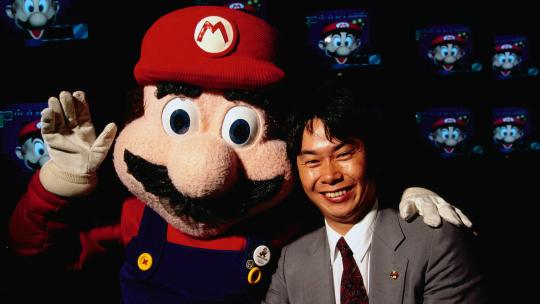
In the end, I stopped just short of all the available stars in Super Mario 64 in favor of moving on to my next Mario led adventure. I completed every star in all 15 stages and then some, but still not 100% complete, just like my original file on my significantly heavier N64 cartridge. In my lack of completion I somehow feel more complete. I admire Nintendo’s resolve to learn and teach their audience. None of the other companies are quite as well known or devoted to this level of pedantism. They create for the future, peering into a crystal ball and sometimes getting it wrong. They knew people would want to wear goggles and play in a more immersive world… they just did it 25+ years too early. They knew old people wanted to just point at the TV, so they created the Wii-mote. They just overestimated the overall novelty outside of… older people. Nintendo may steer wrong, but when it comes to Mario, they always read the current correctly, even in retrospect. Super Mario 64 is a well made game with a shallow world that does more for gaming than it does for Mario, but still comes out the other side an incredible feat. Super Mario 64 is a good game.
#Article#Super Mario#Super Mario 64#Super Mario 3D All Stars#Shigeru Miyamoto#Review#Retro Review#Super Mario Bros#Super Mario Bros 3#Super Mario RPG#Super Nintendo#Nintendo#SNES#NES#N64#Nintendo 64#Gaming#Games#Game Design#Game Development#Luigi#Mario Brothers
4 notes
·
View notes
Text
Of Awe And Spice || Dune
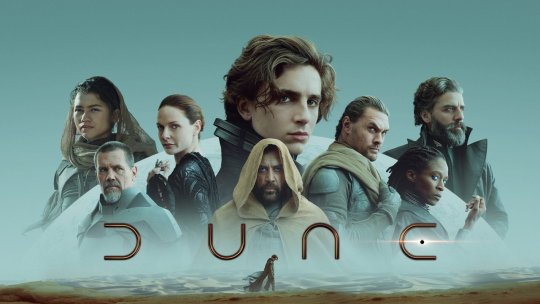
I was dreading the upcoming release of Denis Villeneuve’s take on Dune, and not at all because of Denis. I have a long history of walking the tightrope on my interest in science fiction, specifically the kind that drenches the world building in political intrigue, long histories, or semi-realized special abilities, of which Dune is guilty of all three. The bright spot in all of this was the directors previous takes on two major science fiction landmarks of the past decade, Blade Runner 2049 and Arrival, some of the most competent sci-fi films I had ever seen. Many modern sci-fi films tend to go for more visual flare that send audiences on a sensory roller coaster rather than more human fare of morals and ethics against a foreign, but familiar background. In my opinion, as a book, Dune is a tome enjoyed by only the deepest sci-fi fans. People who want to live, feel, and taste every nook and cranny of a fictional place beyond time and space. I found myself face down, asleep in several paragraphs of the book over my many attempts to complete it, back in the days when I wanted to earn some sense of nerd cred. So color me pleasantly surprised when Villeneuve’s latest film streamlined everything I hated about the book, making an unbearable experience into an elegant tale.
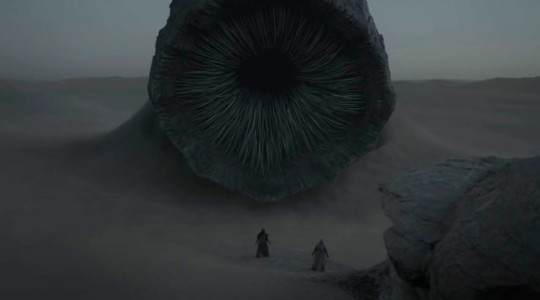
I apologize for belaboring this, but I never enjoyed the mintua of Dune. It had some interesting characters, some intriguing moments, and a deep world, but even thinking about it would put me to sleep. I used to count Spice instead of sheep to get to sleep. It didn’t help that David Lynch’s version was an uninhabitable wasteland not meant for humans to live much less watch. When you watch the 1984 “classic”, the thing that always stood out to me was that nothing about the backdrop, the places the humans lived, looked human at all. They all looked to be living in the ruins of ancient civilizations left behind by extinct species with the design sense of mold or some other kind of naturally occurring geometry. No one walks, talks, or acts like normal people, disconnecting audiences from the human aspect, which arguably is the soul of this story. The reason I mention all of this is because Villeneuve’s Dune is the complete opposite of all of this. His characters act and speak like real people in a world that feels more familiar than foreign. Their religions and histories are more inline as they were probably meant to be, closer to something in our own lives. The technology is art coming to life, popping right off your D&D basement walls. It marries the realistic future of his Blade Runner 2049 with the very contemporary Arrival, as if both films were leading to this. If anything, Dune made me appreciate his catalog all the more. It made me believe that maybe, just maybe… even Akira might be possible in his hands? But let’s not talk about my pipe dreams. (Maybe he could fix Ghost in the Shell…)

This film is made all the more real by its cadre of excellent actors, first and foremost Timothée Chalamet as Paul Atradies and his onscreen mother Rebecca Ferguson as Lady Jessica Atradies. Oscar Isaac has range, and while I never imagined him as much of a father figure, as a King he fits right in as Duke Leto Atradies. They have a chemistry of regal and royal, creating a distance that one might imagine royal families have, close but not too close. Stellan Skarsgård terrifies the audience as Baron Harkonnen with his sheer presence, and his nephew played by Dave Bautista really lean into the clever madness their characters are meant to portray. I could gush about every actor in this film, they all did a tremendous job bringing the unspoken words to life in action, it made me happy to finally see the narrative take center stage while the world built takes its proper place as the backdrop. The camera work almost pays homage to classic 70’s and 80’s B-movie sci-fi, daring to hold the camera in place longer, stare into the characters more deeply, and step away from the action a bit more daringly. The way they play with light might hurt your eyes in a dark theater at first, jumping between the brightest and darkest moments a bit too quickly, but once your eyes are adjusted, it makes for some powerful moments. They walk long hallways, filled with golden art that impresses that these royals live in a museum, well designed, cold, and hard; like a real museum the only living things are the people and the works they are viewing.
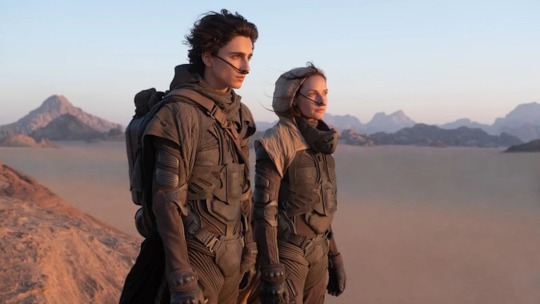
I am actually having a hard time digesting the film, considering how much I disliked the source material and every version of it since its inception. The book, the film, and my budding teenage nerdom all culminated in me wanting to belong while rejecting the very thing people around me loved. I found my way eventually, and in a way, this story ended up helping me find my way. It helped me learn to push back, find where I stand, and still find a way to belong. And now, finally, I feel like I can see what all those other nerds were seeing as they read the words. I can finally parse the magic of the Spice. All told, you should see this film if you are in any way a fan of the director, the book, or science fiction. It really is an incredible spectacle.
#Film#Review#Dune#Timothee Chalamet#Rebecca Ferguson#Oscar Isaac#Stellan Skarsgard#Dave Bautista#Zendaya#Denis Villeneuve#Frank Herbert#Jason Mamoa#Blade Runner#Blade Runner 2049#Arrival#Anime#Akira#Ghost In The Shell
8 notes
·
View notes
Text
Rain, Rain || Weathering With You

It was a balmy, overcast afternoon in Texas, the clouds were heavy with water on the precipice of falling to the ground below. I rushed to finish my lawn and garden chores, hopeful that the moisture would help my corn crop. After drying the sweat from my body and wringing the salty liquid from my sweaty clothes, I decided it was perfect weather to watch an anime summer hit that was sitting in my queue. I put Weathering With You on the back burner based solely on the director Makoto Shinkai’s sensational film Your Name. Despite all the acclaim and love Your Name received, I honestly felt like it was lacking everything I wanted from its premise. I won’t go into it very deeply other than to say I was extremely disappointed and was in no way moved by its story despite a friend of mine being moved to tears. I felt it dodged all the questions I wanted answers to in favor of being a completely different film that was ultimately banal. On the other hand, “Weathering With You” puts its best foot forward. It made an effort to combine its fantasy with its human element, which is clearly Shinkai’s aim in both films. Still, even with the perfect atmosphere to watch his latest endeavor, Shinkai’s tale of Sunshine Girls and young love mixes like oil and water.
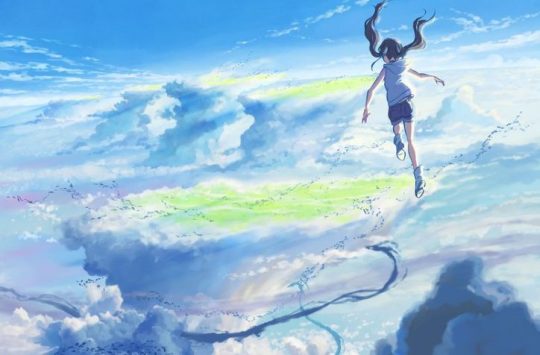
The Japanese name of the film is Tenki No Ko, which translates to Weather Child, a title that is a bit more on the nose. Weathering With You is more of an english tongue-in-cheek title that brings together the two major themes of the film, namely the weather and the emotional growing pains of youth. The story revolves around a teenage runaway Hodaka who finds himself homeless in Tokyo. On his journey from home to homeless to employed, he runs into several colorful characters. The shady but fatherly middle man Keisuke, his assistant Natsumi, and ofcourse his first crush, a girl named Hina, and her precocious little brother Nagi. Hodoka’s new found employment essentially comes down to writing up human interest pieces for Keisuke to sell to various entertainment rags. Recently, the rain in Japan has been unending, a downpour daily, and without any sun in the forecast, Keisuke determines it would be good to sell people some kind of mystical hope in the old tale of the Sunshine Girl, a maiden tasked with praying for good weather. In researching this, Hodoka crosses paths with Hina, a girl who just so happens to have such a gift. Hina also happens to be the sole provider for herself and her brother after their mother suddenly passes away. In an effort to raise money, Hodoka and Hina turn to the internet, offering to goto a location to pray the rain away so people can enjoy the outdoors.

I will say I went out of my way to leave out many of the details that gather the characters together, mostly because the film seems to revel in little story surprises, like little splashes of cold water on a hot day. In fact, that might be the best thing about the film, it consistently surprises you with both the mundane and the fantastic. Just like Your Name, the story is more surreal than fantastic. Mostly, it's a story about growing up but right in the heart of it is this power to control the weather, specifically to make people happy. The problem with the film is it can’t decide which is more important, how the weather affects people or if its a story about struggling to control your life. The two should work in tandem, but the story takes such a long time to find a place for these two gears to mesh. For example, while Hodoka is a runaway trying to live his life his way, we as a society deem him too young to make these choices for himself and we strive to rob him of this autonomy. On the other hand, we as humans are not in control of the weather, we live at the whims of gods and nature. That is until the Sunshine Girl appears. Suddenly, we have the power, we have the control. The weird thing is that these two themes never really come together. The story comes off a little like a jazz drumming. There is a beat, but both hands are moving in wildly different directions, often syncopated, only coming together at the end. It is a bit frustrating the longer you watch the film because you feel like they can’t decide which story you are watching, the story of young runaways or the story of human struggles against climate change. In effect, you are watching both happening concurrently on parallel tracks.

What is a central sticking point and its strongest feature is the consistent visual metaphor of water. This is the wettest animated film I have ever seen, wetter than Panyo and the Little Mermaid. The water is meant to be the glue that binds the fantastic and realistic elements of the story, but more often it is lubricant, reducing the friction between the two, making it almost impossible for them to truly meet. This in turn makes the water itself a third prong to the story, each line going off in its own direction. Water has a unique property in that it always finds the path of least resistance, and yet the film finds a way to completely remove this property. Water is the central adversary to the film's characters and at the same time, they consistently move through the rising waters as if it's not even around them. This may have to do with either how adaptive humans can be or how ignorant we can be despite all the evidence around us. Essentially the only joining theme of the story is how as humans we ignore consequences in favor of getting what we want, which to the film’s credit, does come to a head in a very serious head. Accepting the world as it is without making bargains seems to be the main point, which is frustrating considering how long it takes to get there and how disparate the elements of the story are throughout much of the film. I can’t tell if I think it's clever or ignorant.
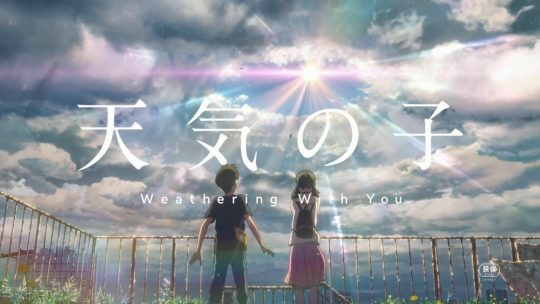
I couldn’t stop thinking about this film over the last week. It leaves a longing for youth but keeps intact the bitter aftertaste that comes along with it. I longed for a wet, hot summer’s walk through verdant grounds in the midst of cityscape. I reminisced about the lovelorn pain of my teens, wondering if I made all the right decisions. I thought about the planet, worrying about our future as humans realizing how little of the earth's time I would actually bear witness to in the grand scheme of even human existence, not to mention beyond it. One of these things is not like the other, and yet they all found their place in Weathering With You. I don’t think all of these things meshed well, it could have used a bit of polish, a bit less resistance, but in the end, I was left pondering its meaning long after the credits rolled. A movie so wet still left me thirsty for more.
#Film#Reviews#Review#Tenki No Ko#your name#Kimi no na wa#Makoto Shinkai#Anime#Panyo#The Little Mermaid#Little Mermaid#Ariel
3 notes
·
View notes
Text
Bimmy & Jimmy Lee || Double Dragon
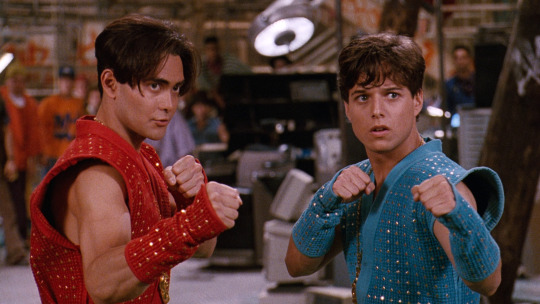
One million weekends ago, before I was a teenager, before the word tween existed, I had a problem to solve. There was a saying, “You can choose your friends, but you can’t choose your friend’s parents.” These parents paid attention to sugar content, video game violence, prohibited “The Simpsons”, and had eagle eye focus on movie ratings. Before Netflix, the casual weekend sleepover consisted of a trip to pick up some pizza and make a stop at the Blockbuster. Over the years, I had curated a list of films that would make it past the prying eyes of helicopter parents. Now, if you have seen Double Dragon, you might be thinking that this movie is tame and lacks substance, but there was nothing like seeing Power Ranger style fight scenes, the man behind the Terminator 2’s T1000, massive explosions, Blade Runner’s Los Angeles, and finally Alysa Millano in a crazy getup that made her look absolutely thicc. But alas, this film was PG-13! Luckily, it could be found in the children's section, which was just enough lubrication to pass right through the parental units security system. And now, watching this with a critical eye as an adult, it really went above and beyond to give you a top notch fantasy that most other films in this line never imagined. It is with mad respect that I say, Double Dragon is a bomb ass kids film.

This movie is nothing like the video game. The story of the original game was very simple. You are brothers, Billy aka Bimmy and Jimmy Lee. Billy’s girlfriend Marion is kidnapped by the Black Warriors, a street gang. The brothers Lee fight through Neo New York to get her back. The movie is bonkers by comparison. What it lacks in preservation, it makes up for with sheer imagination. The premise of the film is completely rooted in this neo Los Angeles (New Angeles in the film) that mirrors a quirkier version of Blade Runner’s LA. The film lives and breathes in all these little details that are totally clunky and you might even say unnecessary, but this film is a soup, one little thing missing and it might not make a huge difference, but together they make an umami broth. The deepest aspect of this stew is the constant earthquakes that plague New Angeles and which also presumably sank Hollywood to the point that they have boat tours of old institutions like the top of Mann’s Chinese Theater, left cresting just above the water. Everywhere they go there are these building stabilizers that need to be pumped to keep the roof over their head, which may or may not be real science. All of the cars rely on fuel made up of garbage that you can grab right off the refuse filled streets. These details can be easily overlooked and undervalued, but it creates a great deal of the flavor for the film. They make up for the flimsy plot and the child-directed acting. They surround the meat of a normal film and make it into something you can really chew on.
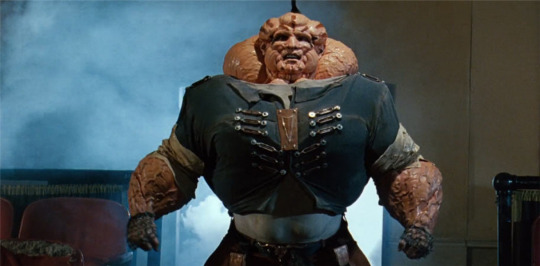
As for the construction and delivery, we might have on our hands here a film that has the most kid movie tropes in a single film. Ever. I tried to write a list, but it seemed endless, and all of them are used on the fly while moving the story forward. For instance:
Infiltrating the bad guys office through the AC trope
Trying to steal something off the bad guys desk from above through the AC grate trope
Falling through the ceiling when caught trope
Turbine fan sucking people in trope
And that's just the progression of a single scene. People slip on gumballs in the middle of a fight for god’s sake! Tropes propagate in every corner of the film. You could even make a drinking game out of one. The brothers do this celebratory handshake where they make a fist with one hand and an open palm with the other and punch into each other. Every time the brothers Lee do their childish handshake, take a shot. You will be way more drunk in the back half, by then it gets pretty intense. I wish I could accurately describe the saturation of kids entertainment nonsense that propels this movie, but suffice it to say, it has it all.
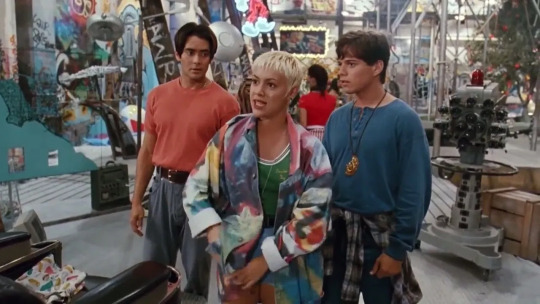
This certainly wasn’t the most compelling children's film of the time, Disney was right in the middle of its animated renaissance and was consistently acclaimed. Live action, low budget kids films were a dime a dozen as well, and most of them were pretty awful. But when it comes down to it, Double Dragon has a consistent, cohesive vision glued together by a living, breathing, cheesy world. It's all in the little details. Like replacing payphones with oxygen stations and having two businessmen fight over it. And like all kids films, they leave the kids feeling empowered. The police are too scared to go out at night to fight the gangs, so a group of teens and tweens called “The Power Corps” decide to take back the streets. Now, what this actually looks like is a little unclear, but they do try to teach kids that corporations are generally the root of all evil, revealing that the corporations own the gangs and pay them to keep people scared. That too is a 90’s kids trope. It was always street gangs and corporate big wigs.

The action and setpieces are campy, or maybe you would just call it corny, and they could have been a little better in some places, but most of the time they are satisfying. This film famously set a Cleveland river on fire and created a giant explosion that had actual citizens calling emergency services. The costumes were the envy of young tweens yearning to hang out at a locker between classes for the first time. You would never find those threads in the store, but you had this feeling that there was some secret store in the mall that only kids 13 and up could find. If you pay attention to all the extras, you will notice absolutely zero consistency in their clothing choices. Sometimes the bad guys are dressed both like clowns and librarians in the same scene. On the other hand, the cool kids in the film have an amazing secret base that the adults don’t have access to, it's truly like bringing to life the feeling of playing at the McDonalds playplace. Double Dragon delivers a feeling more than anything. Maybe it is a feeling kids today can’t even imbibe, their world seems so different, but I think even without the context of the game, this would still make a good late night movie at any sleepover.
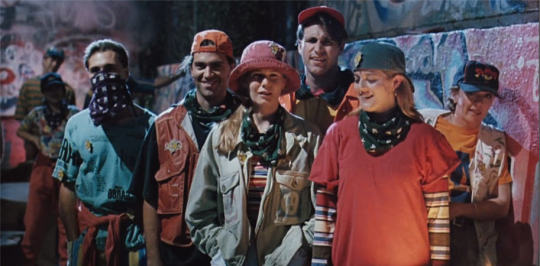
Finally, on the fan service front, because there is so little preservation, you aren’t going to find very much unless you are hardcore fan. Alyssa Milano’s character is named Marion, the name of Billy’s kidnapped girlfriend in the game. At one point, the gang runs into the Double Dragon arcade cabinet. Abobo makes a very strange appearance in a grotesque getup that you will wish you could forget. If there was much more than this, I really couldn’t put my finger on it. Everything else is probably too small or trivial.
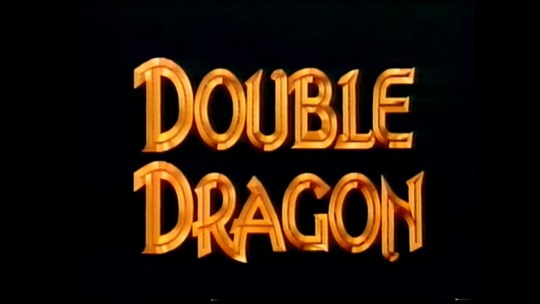
When it comes to making a video game film, this leaned much more heavily on the originality side than preservation, but it had a sturdy construction and delivery that more than makes up for its lack of fan service. Looking through the list of other live action Hollywood films, it’s looking like it will be the last film to balance with this formula, even though this is only the second film in this series. I think the single minded focus on being a fun kids film outweighs its need to mimic the game, which was honestly fine for me then and now. They could have made a rated R version of this that took the whole thing seriously, and that might have fared better, but it's really hard to say. Sci-Fi adult action films of the time were very hit or miss. Back then, video games were for kids, despite their stories and presentation being mature, so this was probably the only way to get the film off the ground. I won’t claim that Double Dragon is the best kids action film of its day, but it definitely has more kids action film in it than any other kids action film. If you weigh the film against something like Titanic, it's going to sink, but put it in the ring punching at its own weight, it's going to be a contender. Two fist pumps way up.
#Film#Review#Reviews#Double Dragon#Gaming#Video Games#Video Game Films#Films#Billy And Jimmy#Bimmy and Jimmy#Alyssa Milano#Kids Films#Entertainment#Kids Entertainment#Disney#Dragon#Dragon Master#Bruce Lee#Blade Runner
4 notes
·
View notes
Text
Mario Mario & Luigi Mario || Super Mario Bros.

The beginning of any quest has its starting pains. In the early 90’s, Hollywood set out to begin getting a cut of that sweet video game money. At the time, video games were mostly considered toys, and they were advertised as such. As the medium grew more adult, so did its films. Still, they had to begin somewhere, and why not with the biggest gaming property on the planet past and present: Super Mario Bros. This provided an unknowingly impossible challenge for creatives, one that is still a topic of intense discussion to this day. How does one balance the adaptation of a property from a completely different format into film? At the time, other films that looked similar to what Super Mario Bros would become had succeeded despite the challenges of adapting comics for film. Teenage Mutant Ninja Turtles and the first re-imagination of Batman since the 60’s went on to invigorate their respective properties. Today, comic book movie adaptations are the tent pole of every major movie studio. In the case of Super Mario Bros, despite its critical failure at the time, I honestly feel like the creatives succeeded. The ire this film would glean over time from both fans and the people behind the camera fuel its bad reception to this day. In my opinion, it is actually a success story in the world of video game adaptations, and a great place to start if you plan on watching every Hollywood attempt. I promise you this: it could be so much worse. And for later attempts, it was! But, does Super Mario Bros thwomp?

In my initial argument, I raised that these films should be broken down into categories including: Originality, Preservation, Construction, Delivery, and Fanservice. Originality and Preservation can be at complete odds with one another. In the case of Super Mario Bros, it turns out to be a good combination of both. They offset each other just enough to find a balance between the reality of our world and the fantasy of the mushroom kingdom. Sit back in your chair and imagine the real world of 1993, what films looked like back then, the landscape of video game culture. I think the creators had this very much in mind when they penned this movie. The very first thing that happens in the Super Mario Bros movie is the NES theme song with all the depth a stereo sound system can provide. It really sets your little gamer heart aflutter. It conjures up images of the brightly colored games. Using narration, they make promises of dinosaurs, meteors, and other dimensions. If you don’t think too hard, it kind of sounds like a version of Super Mario Bros that was advertised via the game manuals and cartoon show. If you are familiar with either, a pair of New York plumbers essentially get sucked down a drain pipe. This process is a little more drawn out in the film, but It turns out more or less exactly as good as could have been expected in 1993. In fact, the film really isn’t above sucking them down a drain pipe, they do crazier things, but I suspect that they wanted the plumbers to have a more direct conflict that would lead them to try and save princess Daisy.

The plot of the film is par for the course in a children's film and a direct consequence of the game itself, especially if you consider the 3rd entry. A good king and an evil military general, betrayals and coups, princesses sent to live in another realm only to return home with a pair of knights to dethrone the evil king. A tale as old as time, one that continues to be retold because it resonates with us. The filmmakers were really focused on this being a performance of realism meets fantasy This would come to be the major struggle that other video game movies would continue to have problems balancing. They took concepts from the game and gave them an original spin and most within the framework of the original work. Their creative license is often challenged for these choices, but in the context of making a live action Super Mario Bros movie in 1993, those challengers should check themselves. The real question you should ask yourself is, in this context, what would you have done differently? And would it really have been better? I struggled to find a way to truly make the concepts of this movie any MORE appealing, but it was surprisingly easy to make it worse. In one way, this film was a by the numbers kids adventure story, but it's being held to task mostly for failing to be a good adaptation of the game, a bar which didn’t exist when they made it, but one they set and cleared simply by attempting to do so much. All the Mario concepts are easily recognizable, which should be applauded, even in the face of them being a little wacky.
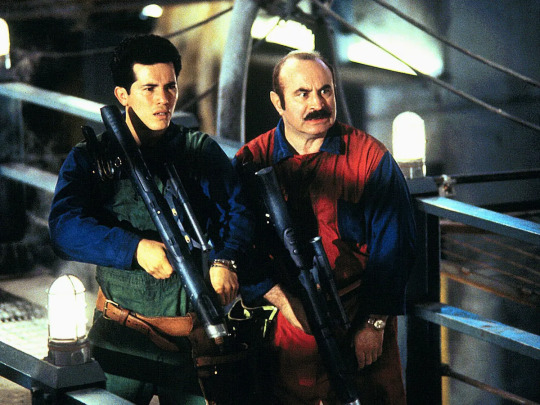
Despite its failings in authenticity, it actually packs quite a lot of fanservice into almost every frame. If you pay attention once they enter Bowser’s domain, the walls are littered with little ads and jokes all based on Mario properties. This is all in an effort to please fans, but the film does tend to leave these little things in the background, the camera more focused on the characters and plot, so blink and you miss them. If anything, this duty to fanservice seems somewhat creatively arresting. Had this film not been an adaptation of another work, they may have opted to skip a few things, like how Mario and Luigi employ the use of mushrooms. In the game, these would make the bros bigger, but this would have been a bit at odds with the backdrop of the grimmy New York City analogy they chose, not to mention technically difficult. People have been squashing miniatures for years, but I just don’t see this being a good use of the film’s time given every other decision. The film's overwhelming attempt to create entirely new flesh on the skeleton of an animated game is really only hampered by the audience's willingness to enjoy it for what it is, by questioning every creative decision. A lot of effort was taken to make the world feel cohesive, especially in its attempt to be parallel to existing New York City. They even take time on some more clever jokes that go somewhat unspoken. Everything in Bowser City runs on electricity, including the cars. The idea here is that fossil fuels do not exist because the dinosaurs of this world haven’t ever fossilized. Or maybe the dinosaurs knew it was bad for their planet? The film is constructed and delivered in such a way as to not take itself too seriously, but to appear parallel to something familiar to our own world in conjunction with the Super Mario world.

After having sat through the film with an earnest critical eye, I am not going to tell you the film is greater than the sum of its parts or that it's fantastic because it set out on an uncharted path. Instead, what I will attest to is that it was truly competent. It made every attempt to give you what you wanted and also took a few of their own twists on the formula. Bullet Bills turned into fuel for jumping, Bomb-oms wear Reeboks, shoes facilitate their ability to jump but also satisfy the boot you wear in Super Mario Bros 3. They even use the lightgun from the NES to navigate screens much like a mouse and the SNES super gun as a weapon! All this and still they found a way to make it all fit within the italian brothers from Brooklyn framing. Unfortunately, it would seem no one really learned anything from the success or the failures of this film. If the 90’s game films are any indication, the only thing they learned is that the box office is fickle and to double down on fan service even when it doesn't make sense, and in some cases, abandon everything about the game entirely and simply slap the name on a completely original film. And yet, despite all the bad press and internal struggles the Super Mario Bros production had, they came out the other end with an inoffensive, enjoyable film that both kids and adults can enjoy. Especially if they forgive the film any perceived sins, a gift that all film adaptations deserve, and just try to recognize what they really accomplished. Bringing to life a world that only existed in your Nintendo. It may not have been pretty, but damn if it wasn’t entertaining.
#Review#Reviews#Super Mario Bros#Super Mario Bros Movie#Super Mario Bros Super Show#Luigi#Daisy#Peach#Princess Peach#Princess Daisy#Film#Cinema#SNES#NES#Super Mario Brothers#Bob Hoskins#John Leguizamo#Samantha Mathis#Dennis Hopper#Gaming and Film#Film and Gaming
18 notes
·
View notes
Text
Mario goes to Hollywood || Gaming And Film
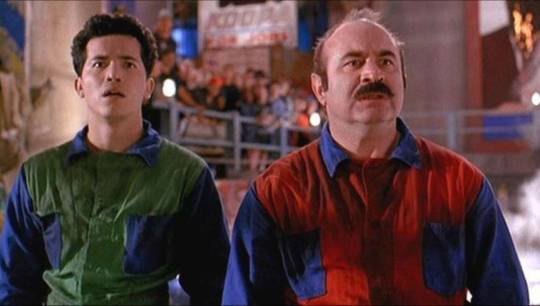
There were no roadmaps for adaptations of video games when the Super Mario Brothers movie was created. Even as a game, there few roadmaps on how to handle its initial success. In its own foolhardy way, Hollywood decided to pit its funds on creating the first major adaptation of the gaming classic. The game had little in the way of story but lots of substance. It was like paint before it hit the canvas, and a group of intrepid filmmakers took that to heart… and presumably the bank had it worked out for them. Basically, it was a gamblers dream. On an estimated budget of 48 million, the film would flop in the domestic box office, 10 million short of breaking even. With this being the beginning of not only Hollywood video game adaptations, but also a never ending slew of critical and financial failure on these gaming gambles, I decided it would be the perfect place to create a rubric on which I could grade every other gaming film. Why? The short explanation would simply be that since games were still primitive when this film was created, the filmmakers took it upon themselves to create their own narrative and re-imagine characters and the world the inhabited. It's the perfect place to start looking at how they adapt properties from the most primitive to the very distinct properties and how that distortion creates new works of art. Super Mario Bros. the movie is so far removed from its origin that every gaming film can be contained within it. No gaming film escapes its disparate grasp on its source, nor does any film try so desperately to entice fans by selling them a new vision of something familiar. With this rubric, I plan to review every Hollywood gaming film, in order, since the Super Mario Bros movie was released. I have some experience reviewing films in this way, having reviewed with a friend, live on twitch, every James Bond film in order, so I know I am in for a gauntlet. But now that I am an aspiring game developer and film enthusiast, I see no other path before me. We are about to do what countless fans have done before me… lets throw rocks in glass houses.
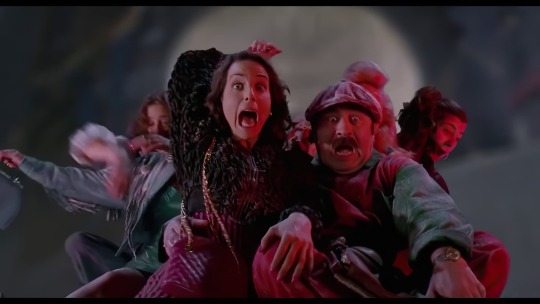
First, adaptation of one media to another requires a completely different rubric for grading than an original creation. With this in mind, we have to define the aspects of games that matter beyond the obvious input of the player. We can imagine the director, the writer, the set designer, the cinematographer, and countless other “deciders” as the person with the controller in their hand. They are the star on Twitch, and we are along for their play, for all their failures and successes. I have found that the greatest game-to-film adaptation is the Street Fighter II The Animated Movie and you can read an ancient entry as to why here. But animated features have the power to create literally anything, they don’t need to rebuild the game out of our actual reality. Because of this, the rubric will concern itself with only live action films. At the time when Super Mario Bros The Movie was released, digital effects had 1/100th the level of realism we see today. The construction of the film relied almost completely on practical effects, everything from crazy outfits and makeup, to foam rocks and animatronics. They created everything about this film from the truly limited background of Super Mario 1, 2, 3 and World. So many of these games, when you really go back to them, relied heavily on your imagination to fill in the gaps, and maybe that's why this film gets a bad rap. Everyone had a different idea of what made Super Mario Bros, but not a single person ever imagined anything like this film. But that’s exactly why, even though it’s the first, it might be the best live action video game film ever made, which is exactly why I wanted to base my rubric on it.
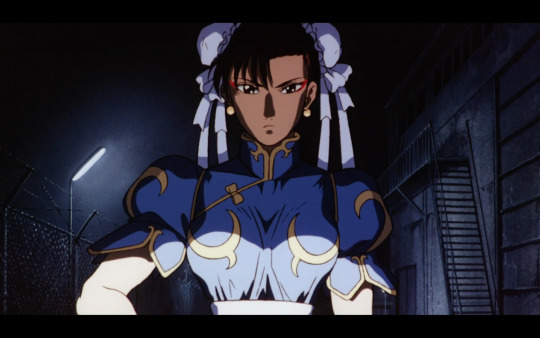
To break down my argument for Super Mario Bros and make a basis for all the game-to-film adaptations we will be looking at the following: Originality, Preservation, Construction, Delivery, and finally Fan Service. When adapting any work, there is going to be a sense of push in pull between preserving the work as it was created and pursuing new concepts to inject into your adaptations, Preservation vs Originality. In the case of Super Mario Bros, it appears that only the framework was preserved, like someone came into the house of Miyamoto and decided to only keep the wood holding up the roof. But when it comes to adapting a two-dimensional world held together by imagination and video game logic, reality beckons for more. At this point in the history of Mario, especially the Mario exported to the US, he spent very little time talking. He was a silent hero, he and his brother. In the afterschool animation, he would talk wise, but in most cases, he just reacted and played the hero, where Luigi was basically the same, only much more cautious. For a while, this show even had a live action section that just made short physical gags based around them being italian plumbers living in Brooklyn, which is about as paper thin as it gets. When Hollywood went full tilt into bringing the brothers into the tinseltown, they needed more fleshed out characters and actors who could bring them to life. To be fair to the film creators, the house of Miyamoto was founded on a little grey box not yet capable of bringing to life the complexity of reality, but what little it did bring to life was explosive in the minds of kids and adults alike.
On construction and delivery, the world of the Super Mario game and the Super Mario film were possibly too far apart. The original was bright and colorful, the live action gritty and greasy. Looking back, there was ample reason for them to make so many original design choices. At the time, the biggest family blockbuster in the realm of cartoon characters being brought to live action was Teenage Mutant Ninja Turtles, and the films had drastically changed the tone in the same way. Granted there was a disparity between the cartoon and the comic, the vast majority of kids that the film was intended for knew only of the cheerful animated world. The turtles films would go on to be smash hits, not to mention other hits that may not have been for kids like Batman ‘89 and even Aliens. It's hard not to recognize this when reviewing this filme, even at the time, it would have been particularly obvious. So why does this film have such a fraught legacy? By most accounts, this would have been by the numbers; a safe bet for people in the business. I don’t want to get into the weeds regarding all the different hiccups about the production of the film, largely we are concerned with the final product. This will be true of all the reviews forthcoming.
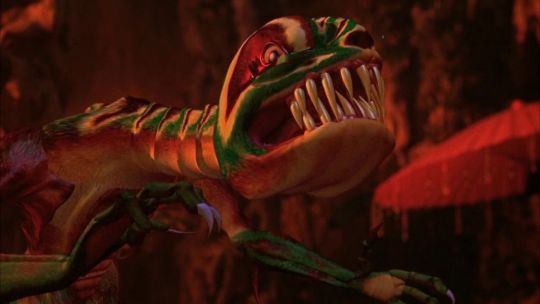
The crux at the core of the game-to-film adaptation is placed between how close to its source material the film is and how good of a film it is on its own. It's judged on two different planes simultaneously, which is a bit unfair, but also completely understandable. It is a work that was created in a completely different realm. Gaming films almost always cannot stand on their own without a major injection of the filmmaker's own creativity. Unlike when adapting books, film marketing often leans into the fact that it started as a game. It's hard for me as a long time gamer to really separate the film from its origin, to imagine what non-gamers see on the screen. Still, the marketing sabotages recognizing it as a film on its own, even for newcomers. But that is really only the case for stand alone films, not those that become a franchise on their own. Filmmakers discovered that when the film stretches the cannon so far away from its origin point, that you can create your own cannon. This is most obvious with the Resident Evil series, which is mostly unrecognizable to game fans after the second film. It should be understood that the game series was and is as vast as the film series, more so even. The popularity of the continuing story of Resident Evil only made the films more popular, despite having little to do with the ongoing source material. This is all to say that the film can eventually survive without input from the game and the game can continue without recognizing the film. They can become independent properties and rely on each other when needed.
In the end, what truly buoys these films, especially in the beginning, is the fans of the source material. They are a key part of the demographic, but really only the base. Both the owners of the games and the creators of the film hope to create synergy, selling tickets and games in tandem. If the film doesn’t impress, the game sales won’t take, even if the film is loved by fans. The fans have already purchased the product, both in this case, and thus the circle is complete. Oddly, despite all the care to add Fan Service in the Super Mario Bros movie, it seems as if it all backfired. Either the fan service didn’t catch fans' favor, or it wasn’t understandable to first timers. Some people think that fan service should be both explosive and silent, like an explosion in space. It should be recognized easily by the gamers, but not disturb or perplex the normies. I can’t say for certain if I feel this is true at the moment, but I hope to discover this by the end of this series. Looking at Street Fighter II: The Animated Movie, I would say this is actually largely true. None of the fan service would be obvious to anyone who isn’t a fan of the game. It's completely foreign yet instantly understandable. In the opening, we learn how Sagat gets his scar and we see Ryu launch his Hadouken. Both of these things are integral to the world of Street Fighter, it wouldn’t be the same thing without it, but a film version could technically ignore it and still get the story across. Fan Service translated into the film is part of the DNA of the original property in most cases, it defines the world. That is the power of Fan Service.

I am starting out this series in a defensive mode; I am here to change the perception of game-to-film adaptations. I think as an experiment, especially in hindsight, some of these films deserve recognition as honestly good films. Some of these films may have not satisfied the cinema critic, but had a huge impact on the audience for which they were created. These films evolved alongside the games themselves. Film was so much more sophisticated in the beginning, and games became more and more sophisticated, mimicking it’s older sibling as it grew up. And in turn, in some cases, film sought to understand gaming; to transform it into something people could recognize in a new form. I am not going to try and ignore the many cases in which these films were primarily a cash grab, like putting Urkel on a backpack (google it kids), but that doesn't mean that they lack all merit. Still, who knows? There are many films on this list I have not seen (the list). But I love games, and I love movies. I plan on being the very best, like no one ever was, and make a film that passes the test, and impresses everyone. To do that, you have to start by recognizing your past for what it is to see what it could be.
#Article#Articles#Film#Gaming#Games#Cinema#Reviews#Film Review#Super Mario Bros#Movie#Mortal Kombat#Family Matters#Steve Urkel#Gaming and Film#Street Fighter II#Street Fighter 2#Chun Li
1 note
·
View note
Text
Dev Dairy: Gaming Insides Are Gross

Before I explain why the innards of gaming are as gross as imagining how slowly Boba Fett is being digested in that Sarlacc, just a little chart of where I have been since my entry over a month ago. I started training my mind for a new morning routine, going to bed a little earlier and getting up before work a little earlier to spend time learning. I got the getting up early part down, 7am never looked so beautiful and my cats are just post zoom, so it works out. Yet, I still haven’t gotten the learning part quite down yet, and I think it’s because I was a little overwhelmed. On the other hand, I have been dreaming up some really great game ideas, inspirations to move me further. If you have read anything on my blog, you know that I spend a lot of time thinking about film, both narratively and constructively, and I found myself doing the same thing for video games. The weird thing is I realized I had never really spent time doing this before. When I thought about why, generally it’s because as I have gotten older, games have gotten longer, deeper, and more sophisticated. Film on the other hand, while more sophisticated in graphics and techniques, they have stayed bite size. Their arcs are completed in 2-3 hours, put into bit size chunks, and you won’t see that in Metal Gear Solid 2 or Persona 5. There is something easily consumable about film creation. Point a camera at something, record it, play it back. Game design is so much more complex and peeling back the veil on their creation is like learning how steak goes from cow to plate. And I kind of… hate it.

Fear not, this doesn’t mean I have quit, it's just a little alarming. I would go into detail, but I am afraid the other problem is the same as all programming: It is very boring to read about if you don’t care. Programming is so multifaceted and so wide, that if you were a layman, it's hard to understand much less know where to begin. Just take my word for it, it's like manually peeling the skin of a living animal. Film is constructed in a much more natural way, point and shoot. All of the objects either already exist to form some other purpose, from the mighty office park to the lowly toaster. But in gaming, they are tortured into existence from cubes and spheres. Their lighting is “baked” (industry term) into them. In games and animation, everything has to be constructed from scratch and formed into a living thing. You are a god. Are all game and animation developers beset with a god complex? I am not religious at all, but it strikes me that filmmakers simply use or augment god’s designs for the sake of their art. Alternatively, games give us a chance to take our collective understanding of the universe and create something for ourselves. It’s actually kind of scary, all that power. I am learning to embrace it.

During all of this, the Mortal Kombat movie came out. Here is my one sentence review: It fails to do as well as the original, but it was entertaining nonetheless. Normally, with a movie of this caliber, I would have gathered a group to watch it in person, but as the pandemic is ever reaching and never ending, the collective decided to watch-party the movie over discord (which was still a great time!). From the discussion over the film, an idea was born. A friend of mine mentioned that not a single video game film has ever broke the 7/10 mark, essentially saying if these films went to highschool, they would all be dropouts. When I looked into the issue, this turned out to be true both critically and fanatically (I have no other words to describe Fan-based scoring). So I decided to do two things: First, that I would only make games that either could never be made into a film or could be translated perfectly into film. Second, that I would watch all of the live-action, Hollywood financed films in order of their release and judge personally if they make the grade and get that diploma. I think that film can and has taught games many things, and I think that I can learn from what film has translated about games. I love film. I love games. Maybe I can bridge the gap.
#Gaming#Development#Developer#Game Design#Video Games#Games#Mortal Kombat#Super Mario Bros#Metal Gear Solid#Persona#Persona 5#Dev Diary#Game Devs#Indie Games#Nerd#Anime
3 notes
·
View notes
Text
Dev Dairy: Press Start.

I have been a developer in the financial world for over 10 years now. You probably wouldn’t believe it, but it actually does offer a fair amount of creative output. Over the years I have had to find different methods that fit hundreds of client workflows, making it easier for them to do work. When I started out in this business, I was hungry to learn anything in the programming world. I took on tasks and concepts that were far from the necessary expertise my job would require. I have always had the desire to be creative in a more artistic field, but have often felt I lacked perspective and raw talent to realize the concepts trapped in my mind. I started to begin to think of it like creating a diamond. It takes time, pressure, and patience. Also, it means you can’t really know if the diamond is ready unless you begin to mine for that mineral. That being said, I decided to unearth my inner mind diamonds (mindmonds? Diaminds?) and start on some projects that have been left buried for the last 20 years. Let’s begin.
If you will allow me to jump back in time a bit, in my middle school years, I cut my teeth on the only thing the early internet had to offer for tragically awkward anime nerds. Anime Music Videos. I had always been a fan of film for as long as I can remember, and through music video creation, I found that I loved editing. During the early internet years, I did some internet sleuthing and found that two things were available in abundance. Dragon Ball Z and Gundam clips. So, I spent night after night, downloading anything I could get my clicker on, and went to work using Quicktime to splice together music and anime. This was before youtube, and I couldn’t afford to host anything, so these never went past my own computer, but my friends were equally excited and hooked on this creative pastime. It became a collaborative affair, late into the weekend nights. We were so young, it didn’t even feel all that limiting that all we could get was DBZ. However, by mid-highschool, this whole affair had to take a backseat to planning a real future, and I focused all my energy on getting out of my parents house, getting into and graduating college, and starting a career.
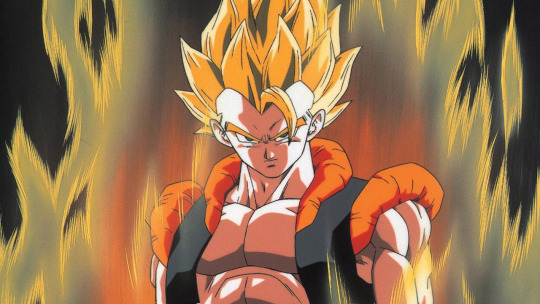
As I said, in the beginning of my career, I wanted to put my hands on all kinds of programming. Microsoft released quite a bit of free tools for their Xbox 360 platform and I began to research game design for XBLA. Quickly, I learned to write really basic games, like Pong. However, it turned out there were so many assets you needed to be able to create, really driving home that solo game creation is not only time consuming, but artistically exhausting, especially if you haven’t spent a lot of time flexing that muscle. It also turned out that this kind of programming was a variant that my actual career had almost nothing to do with. Since I was still green to programming, I decided to bury game design. Until today. I just finished plowing through the first bit of Unity tutorials I bought as a package over 6 years ago, and decided to see if it's something I can get into. Independent game design. As of this writing, my goal is to learn and design a single screen platformer. My muse, a childhood love, Bubble Bobble. This could take me months or even years. I might quit. This could be the only thing I write on the subject. The last few years, as I have gotten older, I have begun to feel restless. I achieved everything I set out to do so far. I have a house, a stable business, and a long term relationship. But I am still years away from raising a child and only this blog to my artistic name. Now is the time. If not now, then when? If you stop seeing progress, hopefully it's just a slump. Or maybe I got pregnant. Send me those good vibes. Peace.
#Gaming#Development#Developer#Taito#Bubble Bobble#Video Games#Dev Diary#Game Devs#Indie Games#Dragon Ball Z#DBZ#Nerd#Anime#Pong
0 notes
Text
Gaps Between Worlds || Live, Love, Link
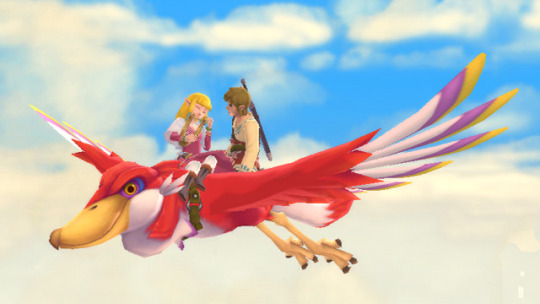
Nothing keeps a story going like a love interest. In almost every adventure story, at some point, the hero flirts with love, falls into it, is blinded by it, or is even betrayed by it. Love is the strongest emotional connection we share as humans, a double edged sword that can drive us, but also hinder us. Even when a story lacks a love interest, the listeners might begin to imagine one just to keep themselves interested. One adventure series has lacked cannon love for such a long time, it's hard to imagine how it’s been kept alive in our collective consciousness for as long as it has. The Legend of Zelda has jump-cut to Link saving Zelda so many times, but remains nebulous on what kind of relationship blossoms from their journey. As a longtime fan, I have been starving for more from the world of Hyrule, and I think fans across the world agree with me. The official Nintendo Hyrule Timeline wouldn’t exist if it weren’t for pressure from the fans. Before that release, it had been locked inside the mind of Miyamoto, creator of the series. But it didn’t really whet my appetite, because what I wanted is to know of Link and Zelda. Today, we are going to explore the facets of Link and Zelda’s many re-incarnated relationships, which could have turned into love, and where they must have gone after Gannon was sealed and their adventure came to an end.
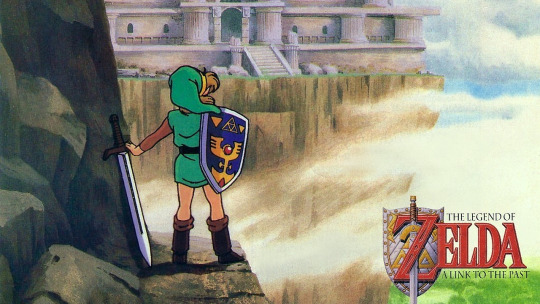
Before we go any further, the usual caveats to my writing, just so you can get where my head is at. First, I am not going to be super concerned with minute details of the timeline in its purest sense. It has a tenuous linear connection from one game to the next, but it still can provide a little fun for us to speculate on. Second, I have completed every mainline adventure with two exceptions. I have made it to the end of Link’s Adventure and Twilight Princess, but I just never walked up those steps to beat Gannon. I can’t really put my finger on why, but usually I just lost interest by the time I made it to the end of the game. Everything else, including the GB, GBA, and DS releases, I have completed.
In the beginning, one of the most bizarre parts of the overall Zelda lore is how little we actually discuss Link’s obligation to do anything for Zelda. As the games mature, they motivate Link in more realistic ways, but I felt that they mostly lacked a real punch. Lets imagine you DID NOT read the manual for the NES titles, the original LoZ, it just starts by breaking the 4th wall. I always thought it was funny that it just drops you into the mountains with absolutely no direction, as if to say, “You bought the game, dummy, do something! Press a button… ooo… check out that cave!” However, what actually happens is Link saves Zelda’s handmaid, Impa, from an attack by some of Gannon’s henchmen. She then begs him to find the 8 fragments of the Triforce of Wisdom, which Zelda has hidden in 8 dungeons, and he just resolves to do it. In the next game though, she’s just struck with Sleepy Disney Princess disease. Classic. But have you ever noticed that true love’s kiss wasn’t an option here? That’s because Link is not her true love in this incarnation, so he has to kill the curse maker. LoZ and Link’s Adventure are directly related, so we know that in between the two games, they never became lovers. And I don’t know if you need any more proof about these games, but if you ever watched the 80’s Zelda cartoon… you’d know she’s better off.
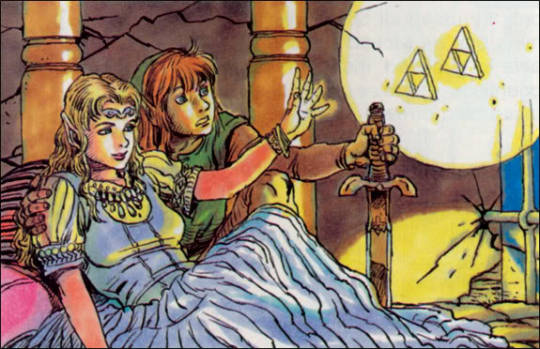
Climbing up this timeline, we end up at the incredible Link To The Past, a story that’s titular description kind of defies its storyline unless you are really paying attention. Either way, the game has Link, a descendant of Hyrule Knights, being woken up by a psychic message from Zelda. As usual, Link has no real discernible parentage, but he does start off with an uncle. As I grew up, I often wondered if this was his real uncle or the Asian kind of uncle, just an older man with the same familial distance as an actual uncle, just not actually related. (It goes without saying that the west has this kind of uncle as well, but rarely does it rear its head as ubiquitously as in the east) Who knows what happened to his parents, the game never really goes into it. Either way, he runs into his possibly real uncle after following Zelda’s request, only, he is mortally wounded, and with his final breath, he begs Link to take up his blade and his responsibility. Again, he is motivated simply by some sense of obligation, but there is never a moment's glance of flirtation or love. By the end of the game, he revives his Uncle, the Priest, and the King, only to get on a boat and end up ship wrecked on Koholint island, where he dreams up a girl who is much more likely to become someone he could have a life with rather than Zelda.
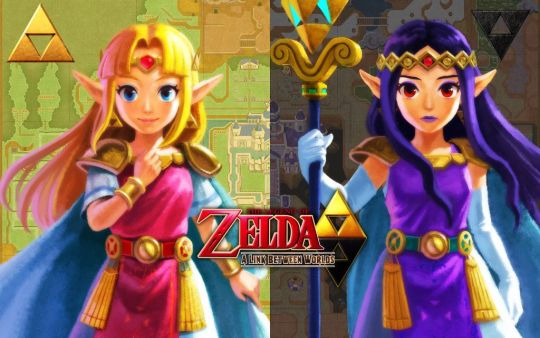
Let’s take a quick moment to recognize Link has about 5 or 6 games that have nothing to do with his relationship to Zelda: Link’s Awakening, Oracle of Seasons/Ages, Majora’s Mask, and Minish Cap to name a few. In these games, it rarely meditates on his relationship to his previous adventure or the girl he left behind. Link is a very forward thinking… little boy? Adolescent? Teenager? It depends on the game. The more I think about this, maybe the more obvious it really is supposed to be. Zelda, Link, and Gannon are reborn into conflict over and over again. It’s possible that the stories that we play through are the only time they are born into a point of conflict. Basically, Link and Zelda might be born into a world without each other. Maybe the world only falls into chaos when all 3 of them are born. Maybe only when a certain amount of power accumulates on the dark side. The story just makes room for whatever it finds appropriate.

Climbing up the timeline, we get to the only game that implied young romance, Ocarina Of Time. Granted, it kind of dashes this with Majora’s Mask, but it's possible he could return to Hyrule for love. He is only 10. Still, in OoT, Link is the only character that keeps his memory of both the young timeline and the teen timeline. When you think about it, Link is pretty mature for a 10 year old, but waking up in the body of a 17 year old would throw you a bit. People in the future might have found him odd… if they weren’t scattered to the winds and mostly worried about famine, death, and Gannon. In both his young and teen timeline, the Zora princess is very interested in him, and yet, the game still ends with a longing look between Zelda and Link, Link remembering everything, Zelda new to the whole thing. Now, I am willing to admit that as a kid, I probably misread this as a longing look, as an adult, it's really just the culmination of Link’s struggle to finally right all the wrongs, but I was a young shipper, and I wanted everyone to fall in love. (You are reading the thoughts of a boy who was super upset that Ash wasn’t awakened by a kiss from Misty (or Pikachu), and instead the tears of all the Pokemon. I almost walked out of the theater. I was a fresh-faced 13.) Given everything we know about both games, and that we know the timeline splits here, it would stand to reason that since in either case, triumphant or not, Link doesn’t end up making baby Link and Linkles with Zelda. In the Triumphant Timeline Child Era, none of the games end with Link in love, including Twilight Princess. In the Adult Era, the Wind Waker series of games always finds Link closely aligned with Zelda, but the whole cell-shaded, PG universe basically ensures that all the people of Hyrule are grown out of the ground, like palm trees on the beach. In the end, Link always makes for the nearest boat or horse and follows the sun, trying to escape the PTSD that haunts him.

Finally, at the very beginning of the timeline is the largely maligned Skyward Sword. As of this writing, SS is the supposed beginning to the entire legend. It is also one of the few games where there does seem to be an infatuation between Zelda and Link. Throughout the game, they share what looks to be a mild flirtation. When I thought about this budding romance, I began to think it only appears that way because of some cultural filters. First, Nintendo likes to make games for kids, so they aim to get an E rating by the ESRB. So if we ratchet that up to M, the standard for modern day games if you want people to take them seriously, we can adjust the love meter on scale with E = Sesame Street and M = Breaking Bad. They might as well be engaging in some hard sexting, maybe a couple of low-cut Link bathroom mirror selfies. Don’t worry, he has his famous hat over the goods. Why do you think its shaped like that? Secondly, mild flirting in Japan is the equivalent of hardcore furry S&M in America. In actuality, what you are really seeing is the courtship of Link in a Wolf costume and Zelda dressed as a Fire Keese batting eyes at each other. Truly, in this world, Link and Zelda are destined for each other. They are the only freaks in the sky! With this assumption, I can conclude that the legend only continues because once, at the very beginning of their timeline, the Triforce of Courage and Wisdom banged it out. This could mean there is a whole series of games we have never played where the timeline is split at the top. One in which they have children and one where they don’t. Personally, I look forward to their kids journey in The Legend of Steve, the new holder of the Triforce of Wisdom. Let a girl save the boy for once!
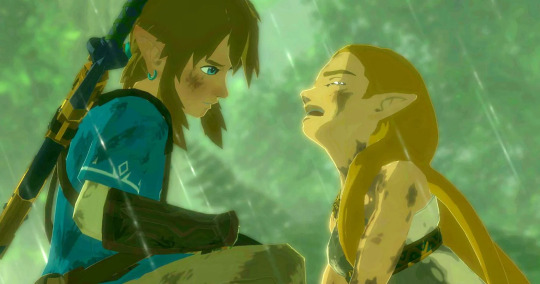
There is always hope for our legendary heroes. You may not want them to be joined in glorious, child-making coitus, but I always have. I have always found it odd that it doesn’t end like most JRPG’s with a very obvious death of the “mains” so that love can’t blossom, or with a lavish royal wedding. The worst part is that often, Link has many love interests, but none of them are Zelda. There is some hope for them in the new Breath of the Wild timeline, which is supposedly the furthest in the future of the “official” timeline, so much so that there is no connective tissue left, so it might as well be a “new beginning”. I would actually hate for them to finally, really, fall in love in the BotW universe, mostly because it's my least favorite Zelda game of all time, squeaking past Skyward Sword and Wind Waker. All 3 of which I dislike for a combination of gameplay-style and story, though honestly, the best part of BotW is the story. It's just a game I never want to play again. Rambling aside, I look forward to the fate of love between Zelda and Link in their next chapter. Maybe we’ll finally play as their love child some day.
#Articles#Gaps Between Worlds#Legend Of Zelda#Link#Zelda#Links Adventure#Ocarina of Time#Skyward Sword#Nintendo#Gaming#Links Awakening#Majoras Mask#Link to the Past#Link Between Worlds#Oracle of Ages#Oracle of Seasons#Minish Cap#Twilight Princess#Wind Waker#Skull Kid#Zora#Shipping#Pokemon
6 notes
·
View notes
Text
Gaps Between Worlds || Pokeballs

The world of Pokemon is a vast and endless… wasteland. The world of Pokemon is haunted, but not scary haunted, more like “Are You Afraid Of The Dark?”. It has the flavor of a nice medium spice curry. Before the game was released, for a year, a whole generation was treated to the cartoon before school started. I was in middle school when the craze took to the little kiddy kindling, and it became a wildfire. Today, I am almost 34, and in the 20+ years, full grown-ass adults have been dissecting a universe built for kids by some other adults who had to balance marketability with art. If you mix all of those things together, you get a wild storm of interesting ideas. Some of these ideas are hidden by clever creators, others are unintended realizations brought on by mixing the real world, with all of its consequences, and this newly fresh, mostern-ridden world. Hamburgers exist, cow pokemon exist, all of our friends are pokemon, all animals are pokemon, hamburgers exist. Hamburgers exist. But the concept that really caught me for as long as I can remember was “What is it like inside a Pokeball?”

In my little child-brain, now fully formed as a semi alcohol dependent adult brain, I remember two major pokeball theories, both of which are mainstays in the community. Realistically, in the sphere of science fiction, there really are only two theories that bubble to the top. First, the Stasis Theory. Pokemon inside their Pokeballs experience nothing. They become pure light energy, and simply bounce around as particles, never aging, never thinking, never living. Second, we have the Paradise Theory. Inside their Pokeballs, they are hooked up like the matrix, and they live in their ideal environments based on their needs, either constructed by their own mind or programmed and based on their poke-type. Ghost types would live in creepy mansions and fire types live near volcanoes, but it would be created by programming in the ball, or based on the subconscious of the Pokemon. Both of these have very clear upsides, but they also have equally clear downsides, which is exactly what we are going to explore!

Before we get to the theories, a few things. My knowledge with the Pokemon series basically ends after the 2nd generation. Without straying too far from the subject, I stopped being interested in the series because it became more important to the creators to add more monsters instead of diving deeper into the lore of the world or the existing creatures themselves, with a few exceptions. Please take that into account going forward. I actually have casually watched a few of the newer episodes and movies and it seems like nothing has changed really, so I suspect I am not as far behind as I think. Also, before we get to the theories, both rely on one major item. The Pokeball! It’s clearly a smart device. Once it hits its target, it appears to know whether the item is a Pokemon or not. It only opens up if it hits a Pokemon. Hitting a human or a rock or anything else, and it stays as a ball. Once the ball is open, the Pokemon transforms into light, and during the show when the angle is right, you can see inside the ball is a series of mirrors along the walls. The Pokeball itself doesn’t seem to have an origin story that I am aware of, but it clearly had tons of development time and money, the greatest minds on our planet would kill for this tech, so one can only imagine the horrors that occurred after this technology was created, but that is for another post.
First, the Stasis Theory. The Pokeball is clearly high-tech, we put that forward, but one thing to think about is that the Pokemon themselves appear to be turned into light. I like to imagine this method as being similar to teleportation. In Star Trek and myriads of other sci-fi, teleportation is considered instantaneous. The moment we are broken down and rebuilt at our location feels instantaneous to us. That is essentially the same experience for the Pokemon. It bounces around as light, and feeling or sensing nothing. Now, the upside of this is that they don’t have to expend energy moving from place to place, consuming their trainers resources, or weather the elements. Now, all of these are more of upsides for the trainer than the Pokemon, unless you’re like Psyduck, and you suffer headaches constantly, this technology is somewhat bleak. And this is how we bleed into the downsides.
The one that always sticks out to me is that, unless you have a benevolent trainer, committing to being a Poke-partner means you might end up waking up in battle after battle. A soldier of fortune. You technically need to be fed as well, but if you are in stasis, you only need to be fed every 8 hours or so of actual time spent outside the Pokeball. A frugal trainer would pay attention to this, monitoring how much time each Poke-pal spent outside of their Pokeball. They technically don’t even need to eat to regain their strength. Specifically, they don’t even need to leave their Pokeball to get healed at a Pokecenter. Battle after battle, they might not eat for days, months, or years if they are used sparingly. Pokeballs can even be digitized. Think about all those Poke-bros you leave in your computer storage. Beyond that, you can alter their memory so that they are reassigned a new master they instantly obey, granted they are “experienced” enough. I feel like I could go on forever, but I want to talk about my favorite downside in this vein. Allow me to extend this concept a bit, maybe to a dark conclusion.

You are on a ferry ship between islands, alone, and anonymous. No one notices you. It’s the last voyage of the night, foggy, dark, and a bit chilly, the deck covered in a light, icy snow. Leaning on the rails, you lose your balance because your sea legs aren’t developed yet. You are also 12, because it's Pokemon. Your body slips into the icy drink without a sound. The shock of the cold causes you to pass out almost instantly and you drown. Along your belt, 8 Pokemon nestled in their Pokeballs. One hundred years pass. It’s summer time and a lone diver exploring the warm waters finds the belt of a young man with a series of Pokeballs attached. On shore, you open each ball, each time a Pokemon emerges, healthy, clear eyed, but confused. Where is their master? Pokemon are smart, so after some pantomime and simple explanation between the humans and Pokemon, you all realize that it's been a 100 years, and its possible the owner is dead. After reporting it to the authorities, they are able to identify the boy using a 100 year old new story. While Pokemon are strong enough to fight one another, the PTSD suffered from the loss of their trainer and the time that elapsed destroys them.
When you think about it, the upside of this bleak story is huge for the Pokemon. You can live, preserved forever inside the Pokeball. Now, to argue with myself a bit, Pokemon do seem to be aware inside their Pokeball. They seem to be able to understand their surroundings and can even hear conversations they aren’t technically present for. There are many instances of the Pokemon leaving their Pokeball of their own volition, so it’s likely this story wouldn’t have happened. One of the trainer’s ‘mon would have popped out of its super prison to help its trainer. And while this doesn’t completely refute the stasis theory, it gives the Pokemon way more cognitive power and agency inside their prison orb than I initially implied.
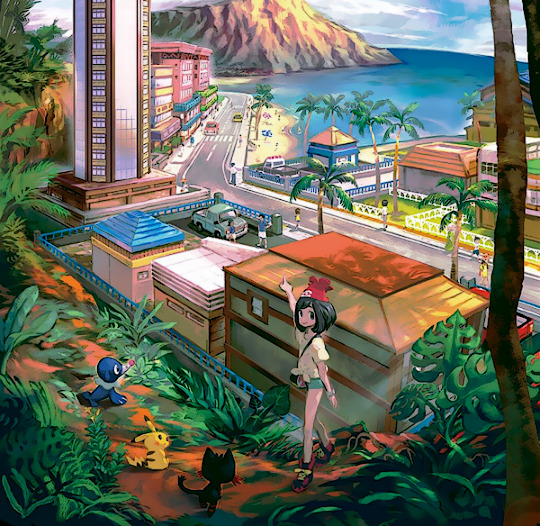
This is where our next theory comes into play, the Paradise Theory. As a kid, I often thought this was the less likely, but much more widely supported idea. There are two branches to this theory, one in which the Pokemon inside the ball is miniaturized and the ball works as a kind of Star Trek holodeck, and the other is the Pokemon is in a state of semi-sleep, hooked into a virtual representation of the world that best suits them. In either case, this would seem to be the ideal state of being for them. Their world is shaped to their liking, so if you are a Snorlax and you need a fat snack and soft sack to sleep on, the Pokeball manifests it. I always imagined in either case, because of their apparent awareness of the outside world, that of the two theories, the miniaturized one was at play. They remain fully conscious, and up in the sky or somewhere in their spherical prison there would be this floating screen of what is going on outside… like an omniscient camera, equipped with a mic. Again, this was kind of my childlike wonder at play, not really concerning myself with the intricacies of how this would actually work, but it also doesn’t seem like the creators gave it much thought either. Pokeball tech is the major gap in this world.

As for the downsides of this method, the only real standout is their consciousness. In the Stasis Theory, the moment they enter the ball is also the moment they leave. In this version, they remain aware of the time and the outside. So if they haven’t eaten in two days or been outside to hit the Poke-toilet, they can really feel it. Still, in this version, it does appear as though they can leave at will. Also, in the show, it often shows that they appear to get kibble at every meal that the humans eat, which brings up its own set of questions, but that’s for another time. In the drowned trainer scenario, or maybe one who is stuck under an avalanche, imagine you are a Pokemon not equipped to deal with the terrain, like a charizard in water, you are not only aware of how screwed you are, but you have to choose to either end your life by leaving the Pokeball or wait until you starve to death. I suppose it ultimately depends on how smart and perceptive a Pokemon breed actually is that really determines the merits and downsides of this theory. Take a moment to imagine a really social Pokemon, like a Pidgey or Pikachu. Does the Pokeball conjure fake friends for you? Are the Pokeballs interconnected, so that you can mind meld with your trainer’s other captives? Do certain Pokemon end up becoming attached to the fake friends inside the ball rather than worry about the outside world? Can a Pokeball become addictive?

To spare my little psyche the pain of having to empathize with Pokemon I left in their balls for too long, or maybe stored away somewhere so that I can “catch ‘em all”, I chose to imagine the Stasis Theory when I played the game. The one thing this game really dodged was imparting the idea of the empathy and responsibility of actually raising 150+ living, thinking creatures. I think this might also just align with the nature of young humans, but still, the creators really shirked there responsibility on this aspect. The game’s and animation’s inhabitants espouse constantly their belief in Poke-rights, but at the same time ignore the subject of pitting them against each other as a negative. Most Pokemon are intellectually somewhere between cat and monkey. Other’s appear to have just as much going on as humans. While Ash never imagines catching every Pokemon, the game sets you on this collectible path. Using my own childhood as an example, human children don’t appear to naturally think out the various real world equivalents to their in-game mantras. They see the Pokemon as theirs to do with as they please. Give a stupid name. Trade with other kids. Collectable bits of data. This was not my cup of tea as a kid. I much preferred the animated universe of Pokemon to the game for this very reason. Sure you can play it anyway you want, which I often did, never expanding my roster beyond 8 at a certain point, but this was also a very impractical way to play, which hurt my more logical side. Just to live with myself, I created a method of play that worked for me. Somewhere between the Stasis Theory and Paradise Theory. I just told myself my Poke-pals loved their home and me. So… I caught. Them. ALL. But in doing so, did I condemn my allies to flashes of life between battling and dinner? Did I render them in a paradise of their own making? Are these creatures really so docile after being beaten by another of their ilk so that I can force them to be my friend? Best not to dwell on it. Pika-pika.
#Articles#Pokemon#Gaps Between Worlds#Pokeballs#Ash Ketchum#Mysty#Brock#Pikachu#Charizard#Gameboy#GameFreak#Pokemon Company#Red#Blue#Satoshi
0 notes
Text
Gaps Between Worlds || Mega Man X

Recently I have been searching for the answer to a problem I have been drowning in: Do I still love playing video games? There was a time when new video game releases would get me hyped, and it could just be that I am getting older and my priorities are changing, or my love for games is evolving, but I think there is a better answer that sounds more analytical and less like a platitude. I had to start thinking about what made me fall in love with games in the first place, which was easy enough to do; it was an escape. We need to go deeper. What about games, about the escape grabbed me. Looking back at my most recent completions: Dark Souls, Persona 5, Final Fantasy VII Remake, and Crisis Core: Final Fantasy VII, most of them offered a balance between challenge and story. For a long time in between the excitement of a title, I had been relying on a game either appealing to the challenge or the story, on a sliding scale in one direction or another. Whenever I feel overwhelmed by my lack of enthusiasm for new games, I pick up a game from my childhood, something that made me feel nostalgic, something like Mega Man X. They have this ability to lift my spirit and invigorate me. That’s when I realized what was missing from modern games: my imagination.
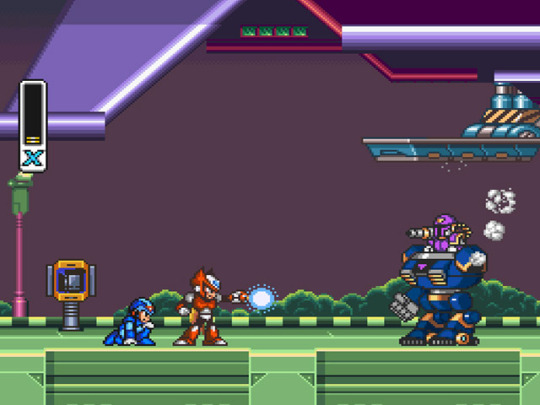
When I booted up my copy of Mega Man X this weekend, it was like it was calling to me. I did it subconsciously. I was struggling with my drive to play Persona 4 Golden, and picked up Nioh, a playstation plus game that had been sitting around for awhile. I was working on a boss, and I just wasn’t feeling it. That’s when I went looking through my games library. I had actually picked up a copy of Mega Man X Legends a while back, installed it, and never played it. Without thinking, just like I did when I was a kid, I just started playing it. The Capcom sound plays and the Mega Man logo flashes across the screen and I am instantly back on my friends bedroom floor, hogging the controller. When the first level starts, it’s instantly chaos, cars flying down the highway, trying to escape the ensuing carnage. You can find out why if you wait for the demo screen that explains the game instead of instantly pressing start, but I never did as a kid, and this led precisely to what I am here to talk about. I filled the gaps with my imagination, even in places where the game didn’t ask me to. I was hungry for a world that I could make cohesive. One that offers a clear definition, a map that leads the eye and the mind to a conclusion, but open enough to let that conclusion be anything that suits you. (The opposite of the Nomura-verse!)
In the era of 8-bit and 16-bit games, the worlds were often presented as flat, layered objects, but drawn to appear in three dimensions like a diorama or, as they often called levels back then, a stage. After you beat the opening level and receive a helping hand from your… friend… or brother… or just some other robot who looks cooler than you, Zero, you are introduced to the classic Mega Man selection screen, but with an interesting tweak. You now can access the enemy’s location via the map screen. This really got my imagination going as a kid and still does to this day. It’s just a minor tweak to the usual formula for the series, but it suddenly added a new layer of depth. I always knew they had to exist somewhere, but it never occurred to me that there was an interconnected ecosystem. They boldly took this approach a step further. Defeating certain Mavericks (the stage bosses) affected another Maverick’s stage. For example, defeating Storm Eagle causes the plane you fight on to crash into Spark Mandrils’ stage. I loved this because as much sense as it made, it also really didn’t make any sense.

Take a look at the map. It is an incredibly dense locale, seemingly made up only of the locations related to the Mavericks. You start the game in some sort of cityscape, but now, you appear to be on some kind of island or peninsula that maybe… supplies all of the needs of the people in the city? Some of the functions of these stages are clear, some you have to make a stretch, and others defy clear explanation. You have a power plant, an airport, a mine, and a factory, all pretty straightforward. As a stretch, we have a forest that possibly processes carbon into oxygen. It doesn’t seem to produce wood, the trees are all made of electronics and covered in a wood veneer. The sea port is also a bit mysterious. It seems more military related than shipping related. All of the robots aren’t the repurposed kinds you see in other stages. They already have missiles and lasers, they are attack focused. So this is probably a military research facility. In the unexplainable, first we have the icy mountain stage, which could be a mine or maybe a research station. I often thought that it produced and controlled weather, but what exactly does a mountain have to do with that? Maybe it is rooted in science, but as a kid, the mind isn’t fully formed, and as an adult, you just know that water becomes clouds and it rains. The American Education system is broken. Lastly, we have a tower that appears to be surrounded by a moat. As a kid, I used to think this was the control tower for the airport, but now I am thinking it might be the control tower for the entire peninsula’s robot ecosystem. It’s not clear, at all, but that's what makes it fun. It is the inconsequential nature of their necessity that makes it fun to explore in your imagination. The bosses don’t speak between each battler or even introduce themselves beyond the shonen bad guy thumbs down, phase in, or muscle flex posturing. If you dig, I am sure there is some concrete answer, but the power is that it ultimately doesn’t matter, it’s just fun to play and explore, either way you go about it.

What also stands out about the construction of the map is how one stage actually interacts with another. If you notice, the Chill Penguin stage is way up at the north side of the map and the factory is to the south, and yet, when you beat Mr. Chill, you Flame Mammoth’s stage is frozen over. There are other stages between the mountain and the factory that are totally in the way of the possible avalanche that would have hit the factory, and yet they are unfazed. I get it, fire is weak to ice, but since there isn’t really an overall method to the madness in the construction of the Map image, as far as I can tell, I just can’t figure why they didn’t move the stages into proximity of the stage that is affected by the defeat of a Maverick master. What is hilarious, the defeat of Launch Octopus causes the forest to overflow, and wouldn’t you know it, they are right next to each other. Same with the airport and power plant, helmed by Storm Eagle and Spark Mandrill respectively. The funny thing about the airport is that because you destroy an airplane in midair, you could have destroyed any stage on the map, and it would have made sense. It would have been even cooler if they had made it so that the longer it takes to defeat Storm Eagle, that changes where the plane falls, and thus the stage it destroys.
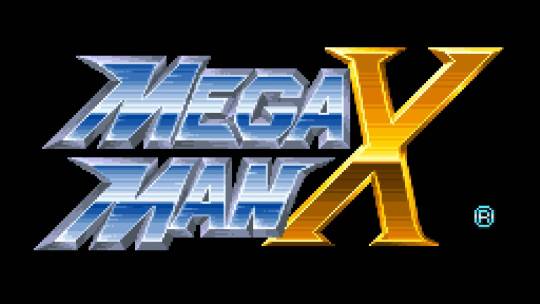
It’s not that modern games don’t have these imaginative gaps, it’s just that there are much fewer obvious gaps in the world because they have so much more space to create in. Just looking at the file size between games of the past and today, it’s like comparing the size of Mercury to Jupiter. With that in mind, it could be that I haven’t spent the time to really dive in and find the cracks in modern games. As a kid, I just played the same games over and over again and committed these gaps to memory.
I decided I would use this title to discuss different aspects of the gaps between the imaginative leaps that storytelling asks us to make. Like how we all came up with a particular internal story about what happens inside a Pokeball. I was part of the crowd that thought maybe they get their own personal oasis that suited their type. Or maybe we can discuss the implication of the relationship that Zelda and Link must have based on the minimal interactions we actually get to see them in. Mega Man X has many more facets as series we can dive into, like how exactly his buster arm might actually function and be powered? Maybe it is an internal nuclear reactor offset or totally green and powered by the sun. If it was nuclear, does he leave behind fallout at every defeat? Hopefully I can dedicate more time to this! Thanks for reading.
#Articles#Megaman#Mega Man#Mega Man X#Gaming#Video Games#Zero#Rockman#Rock and Roll#Roll#Dr White#Dr Wiley#Sigma#Penguin#Chill#Games#SNES#Retro Gaming#Retro#Anime#Japan#Capcom#Keiji Inafune#X Buster#Gaps Between Worlds
1 note
·
View note
